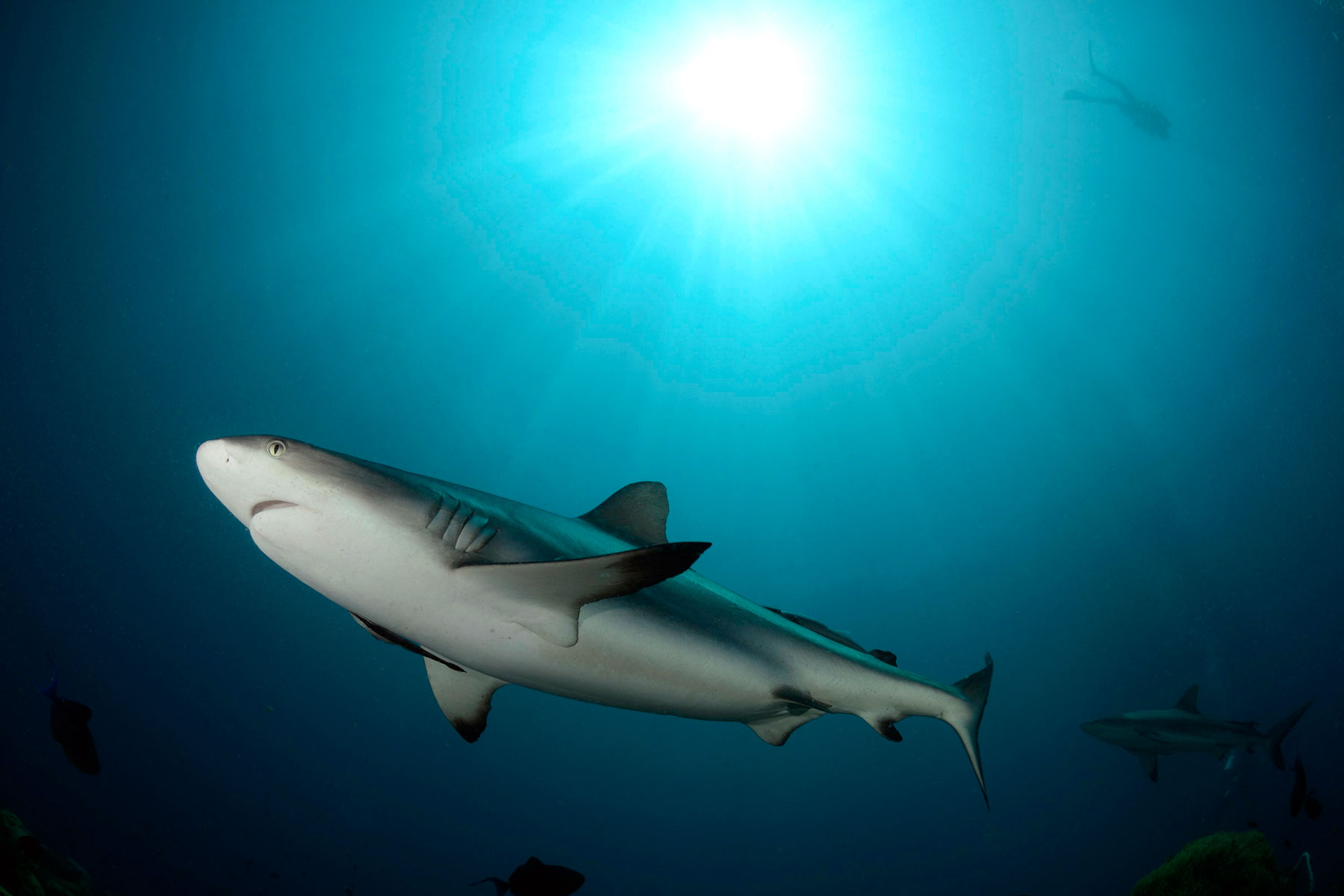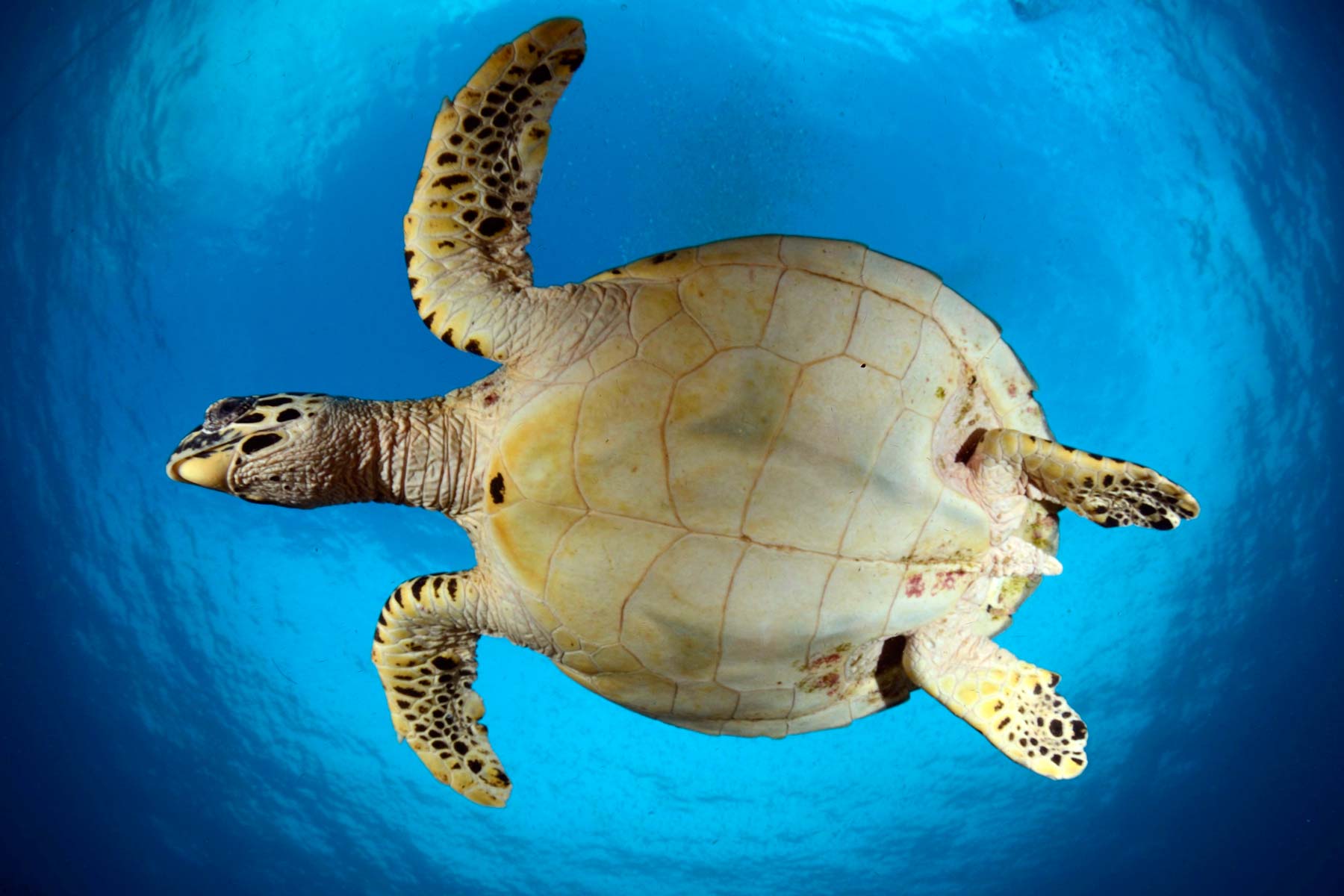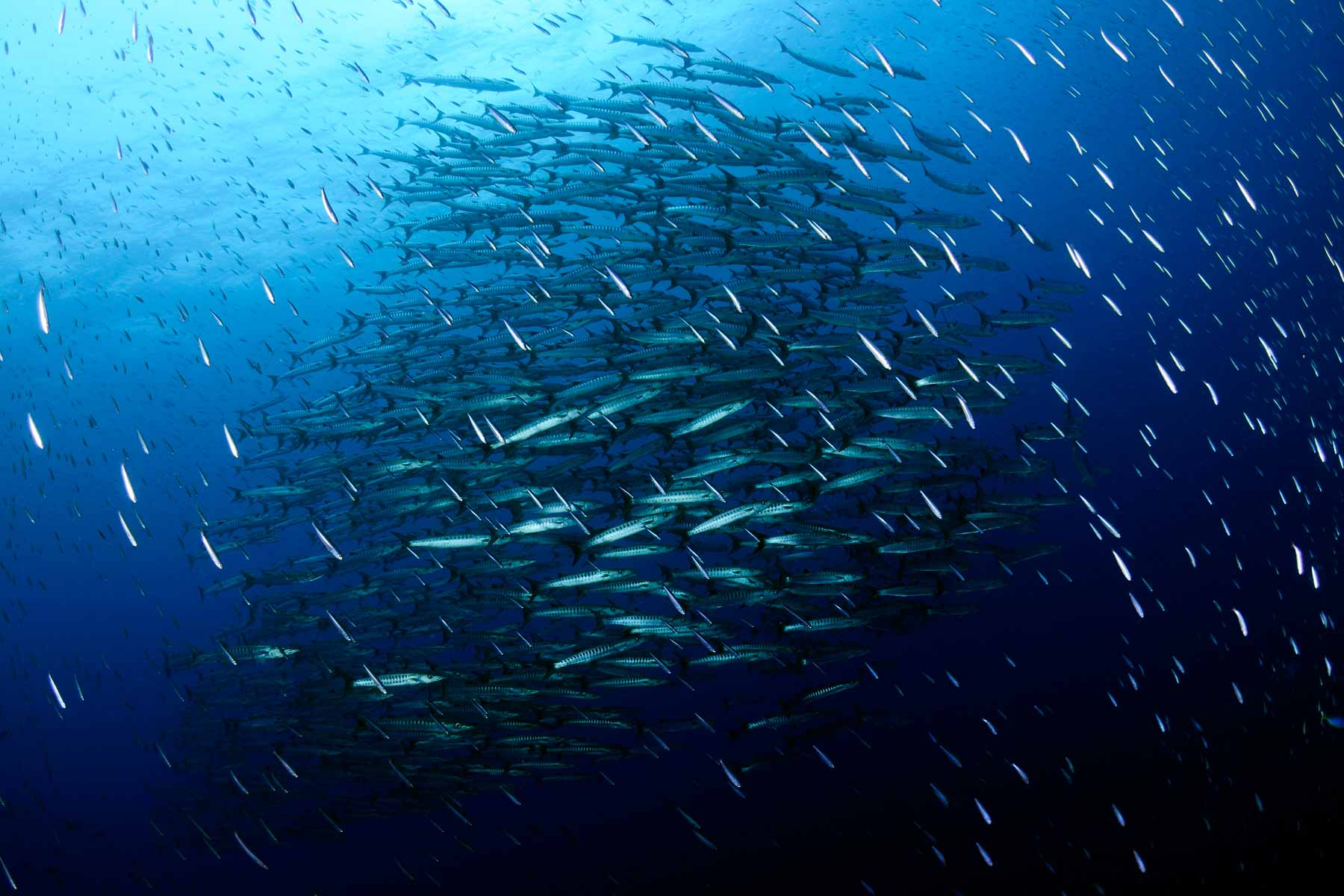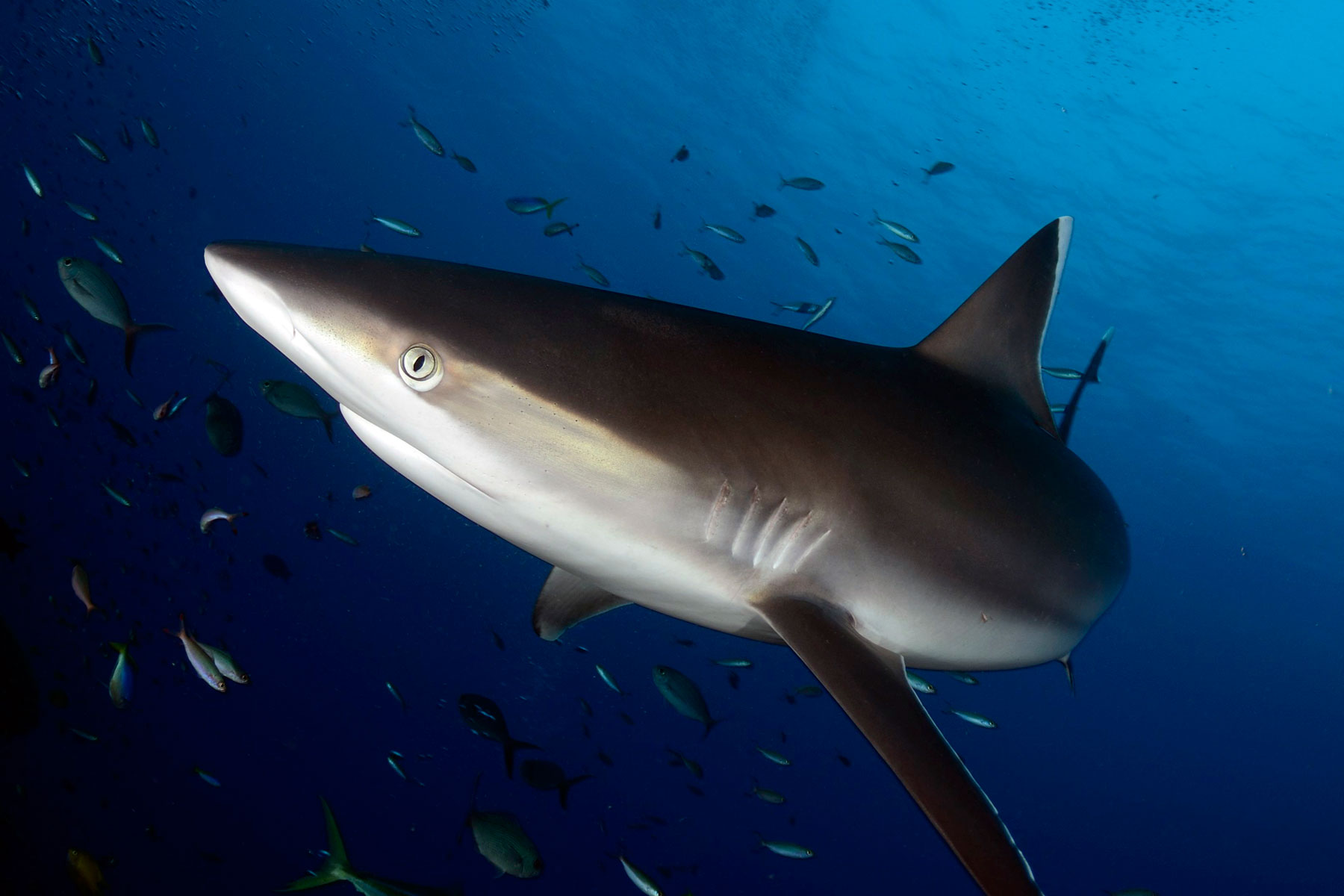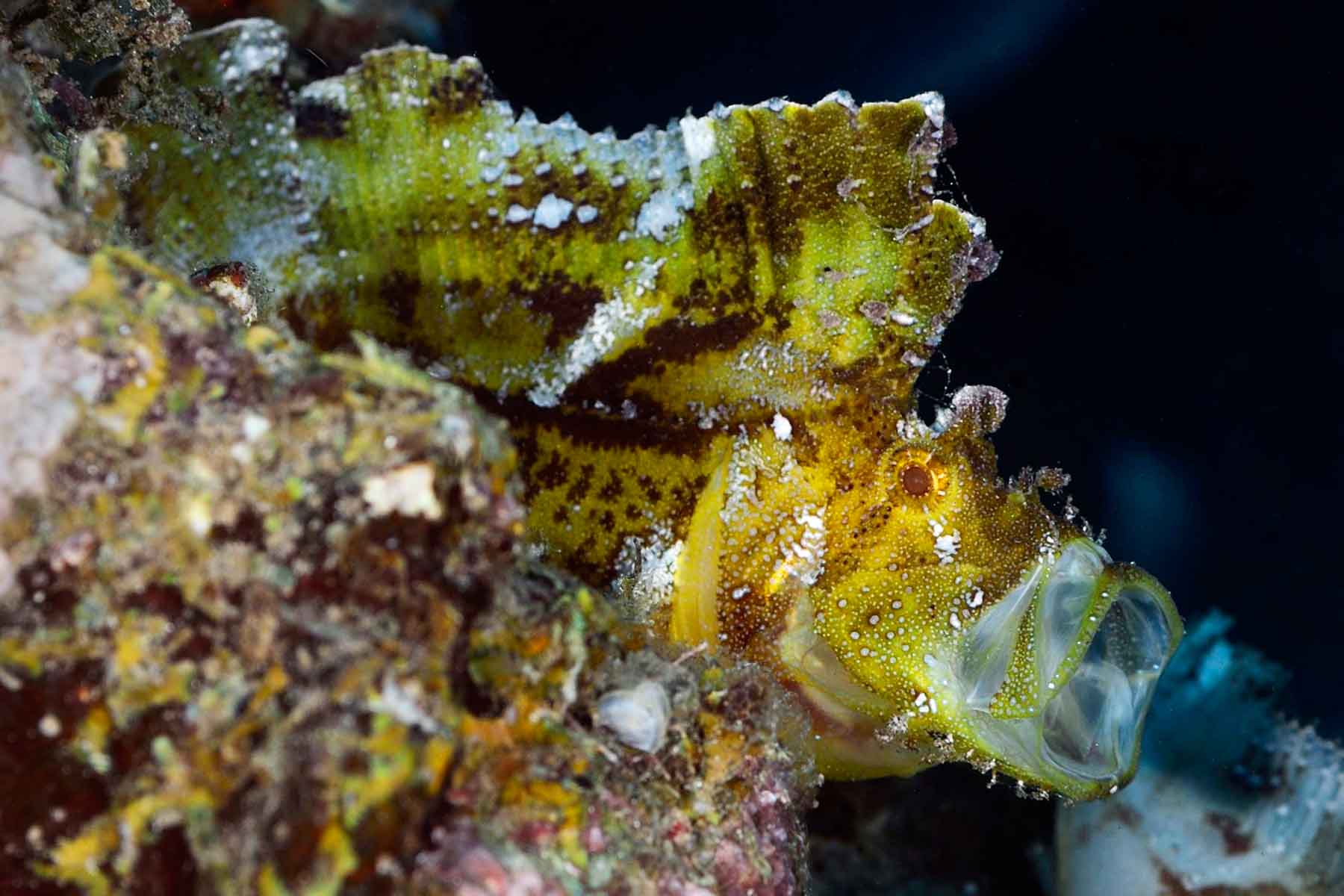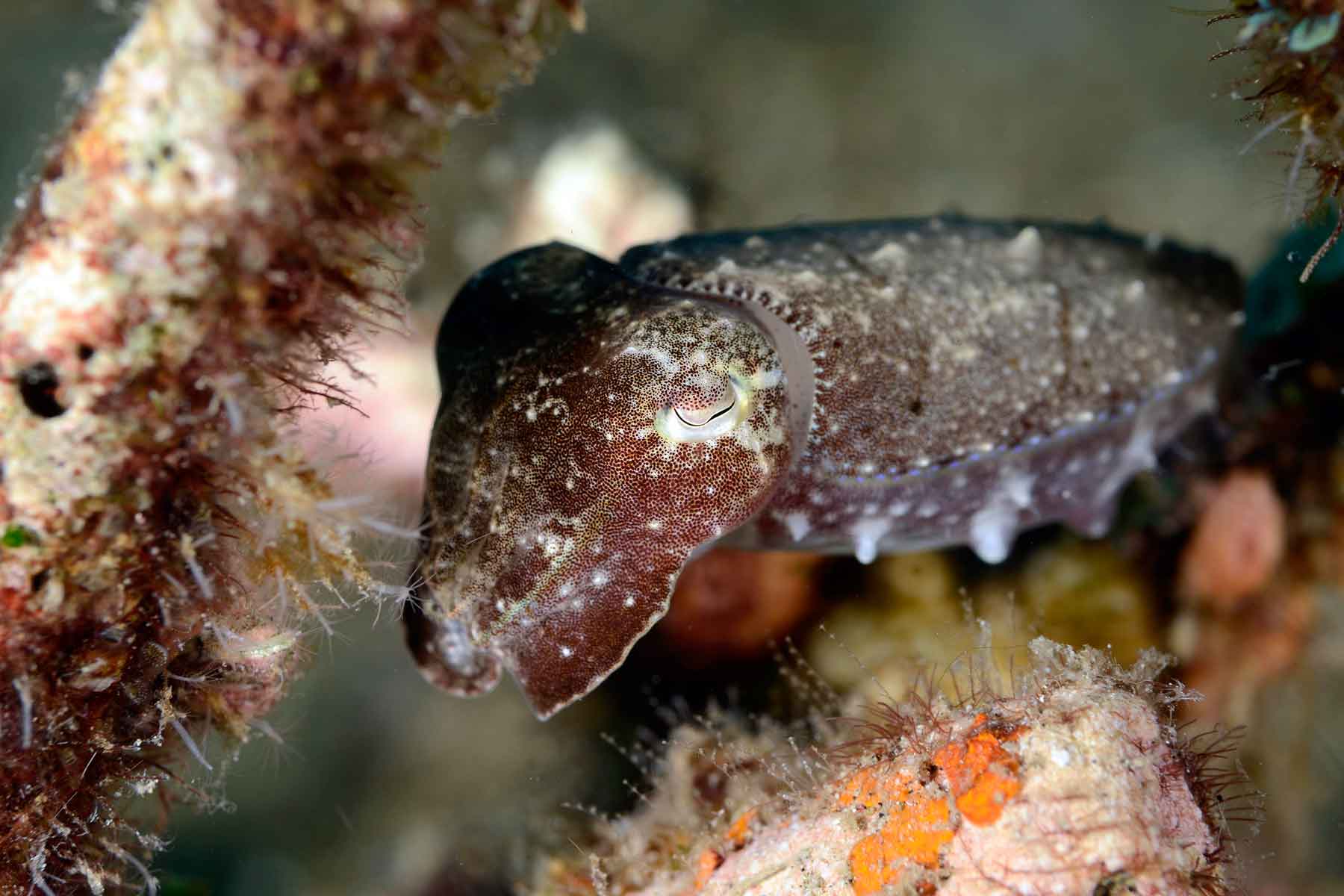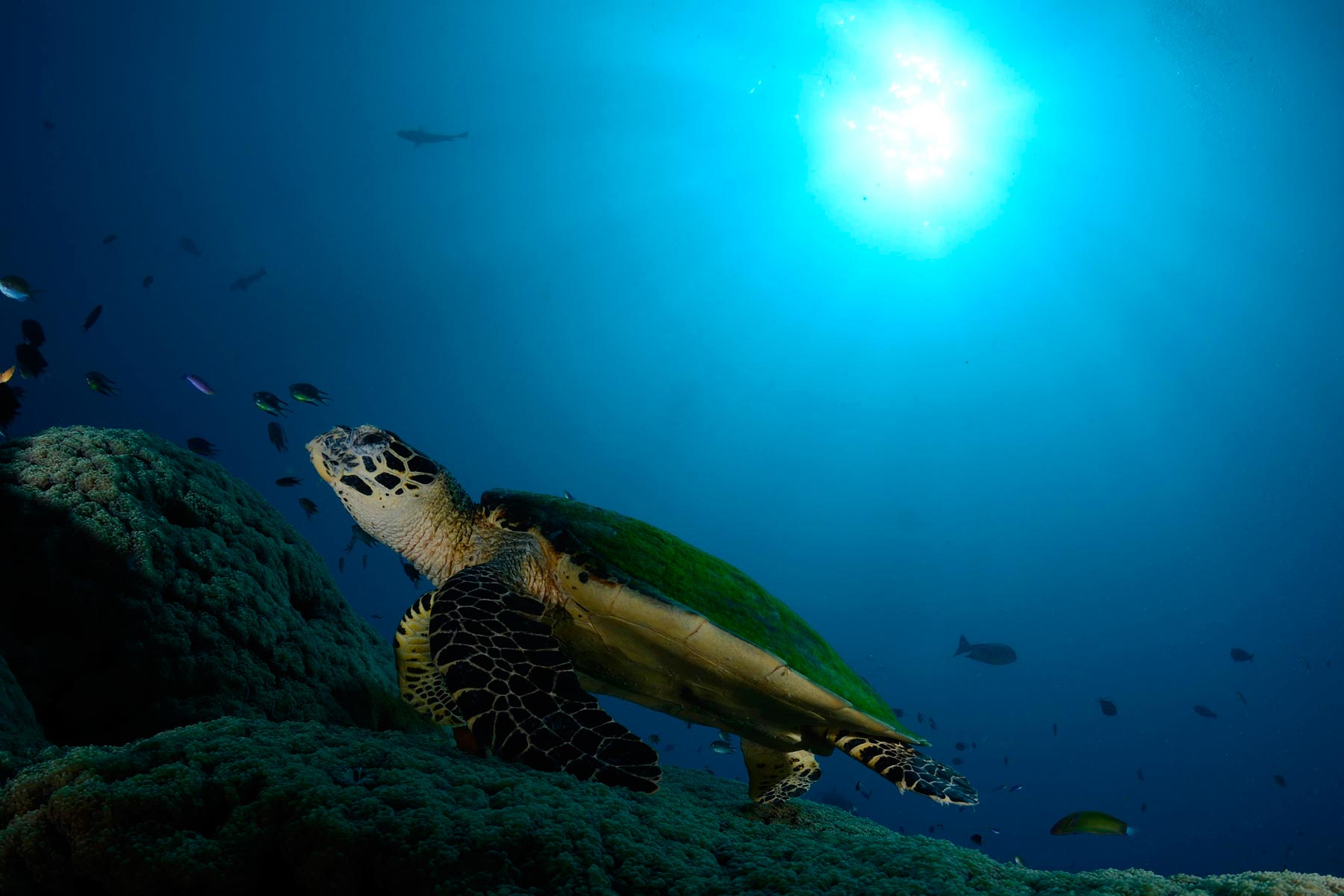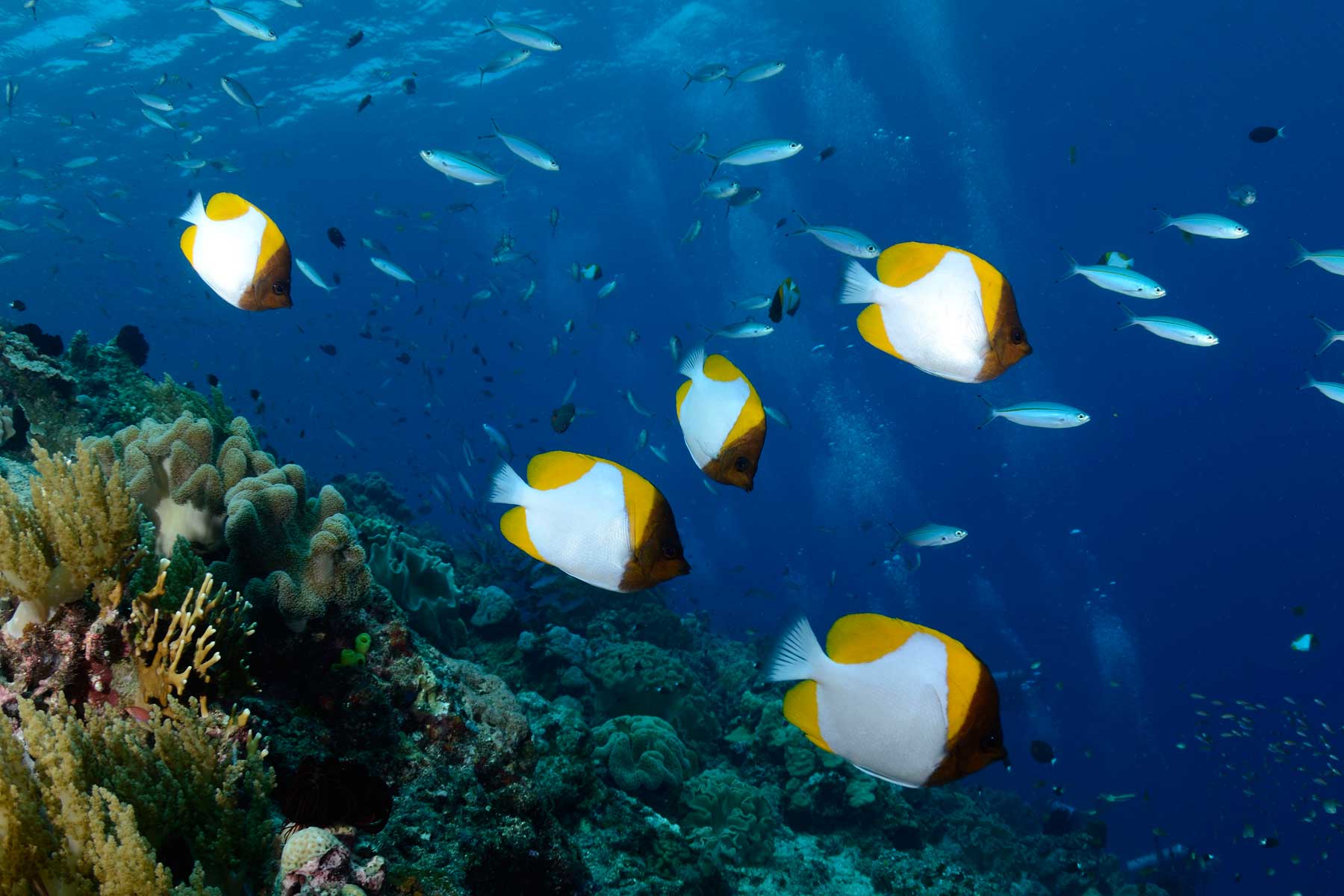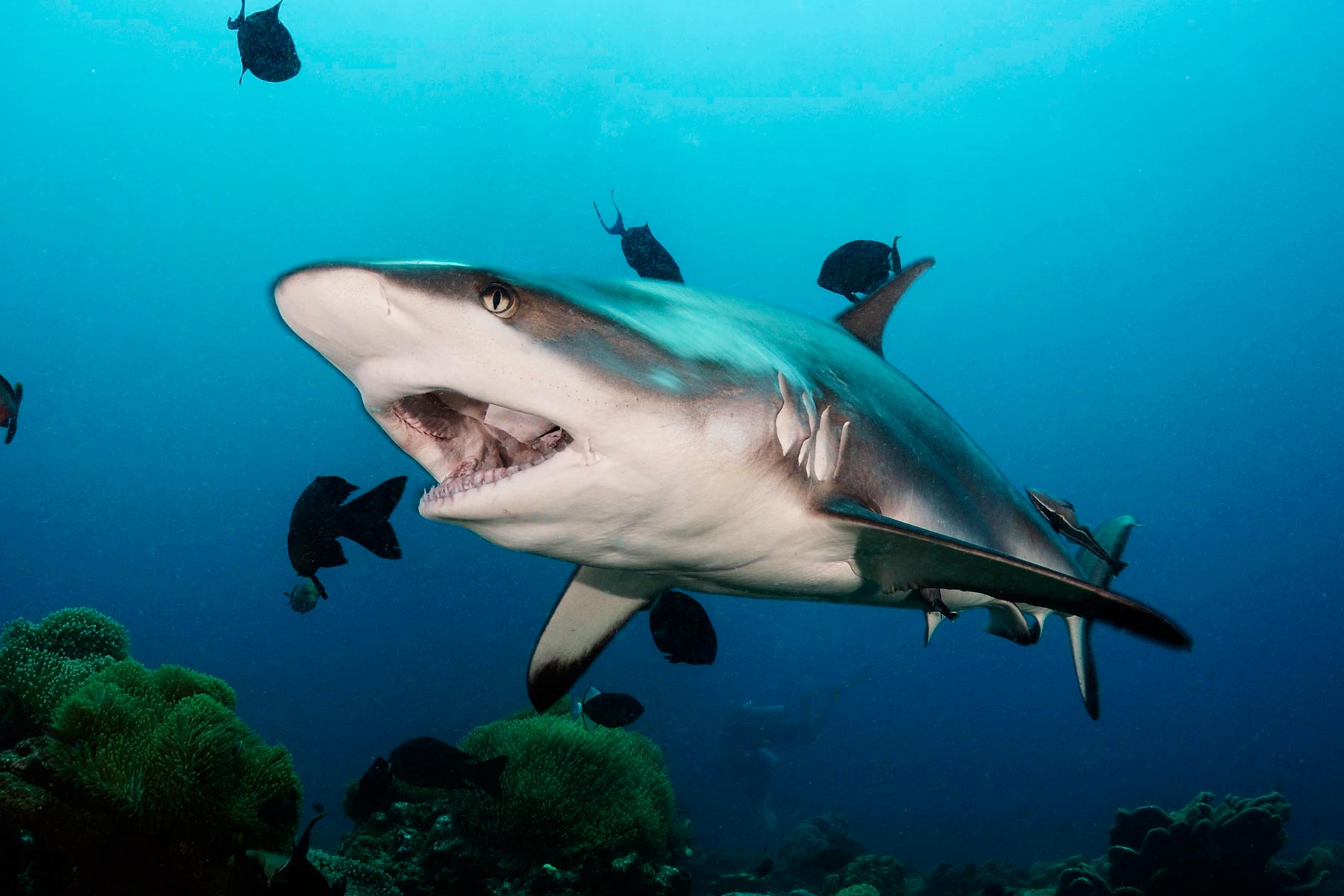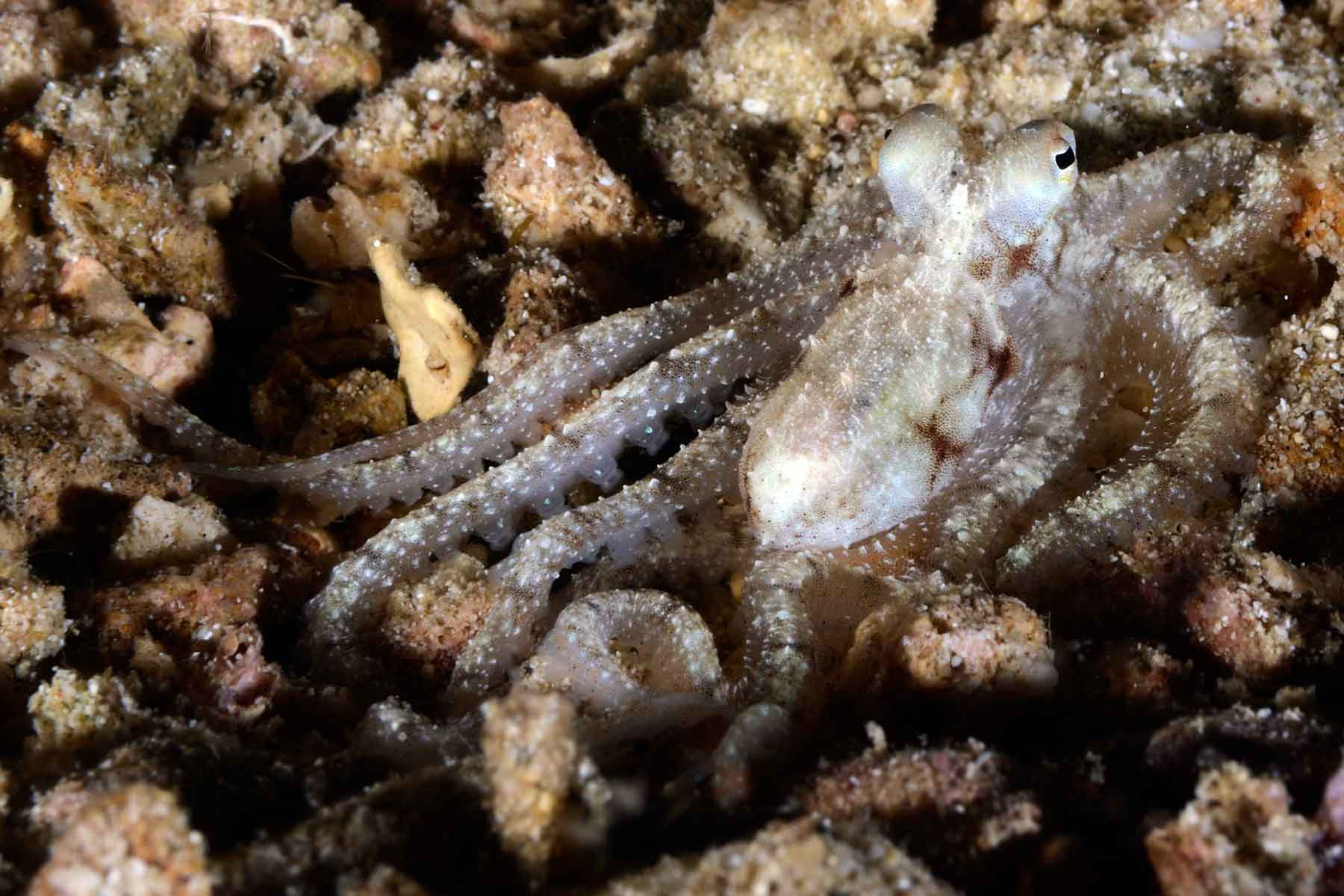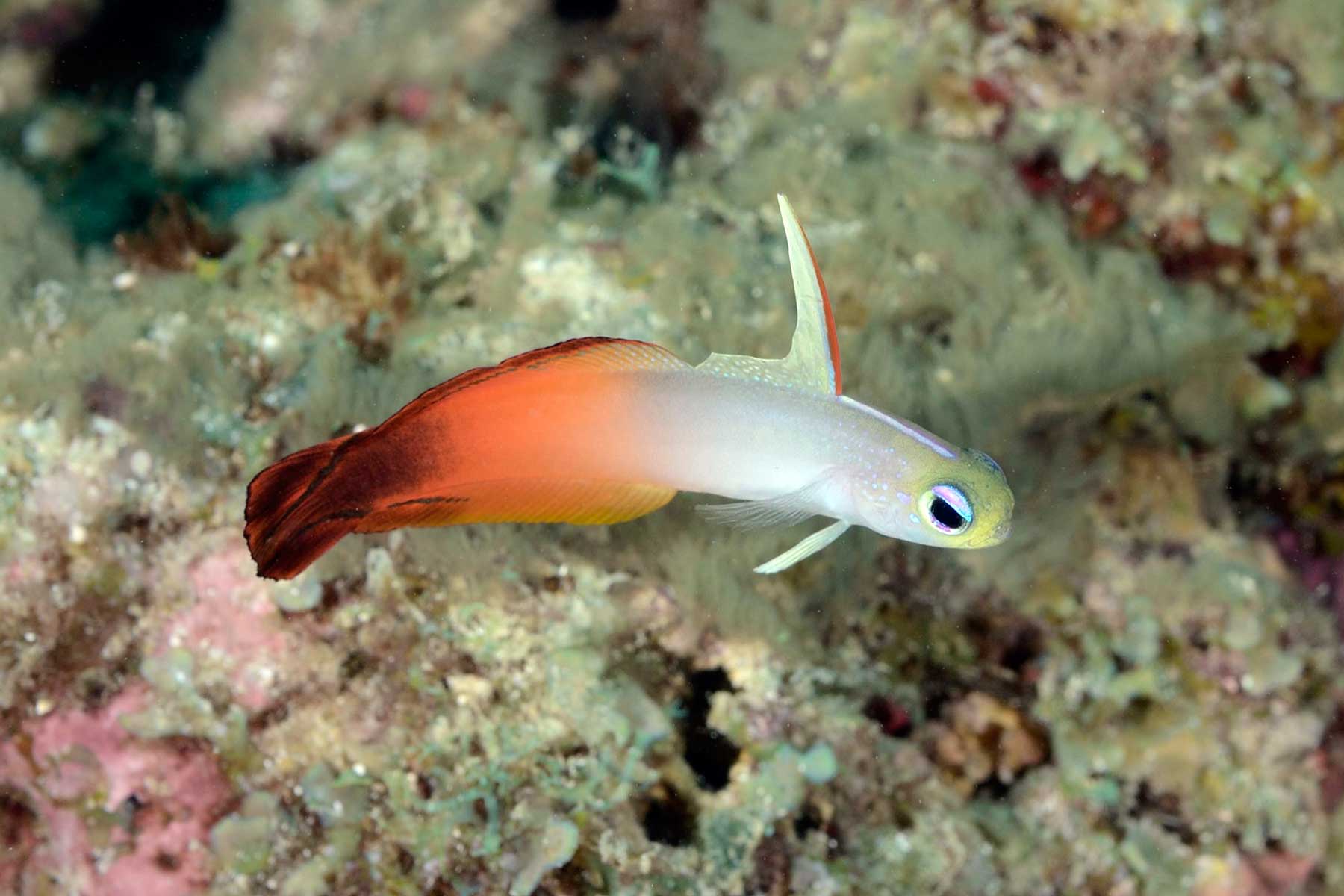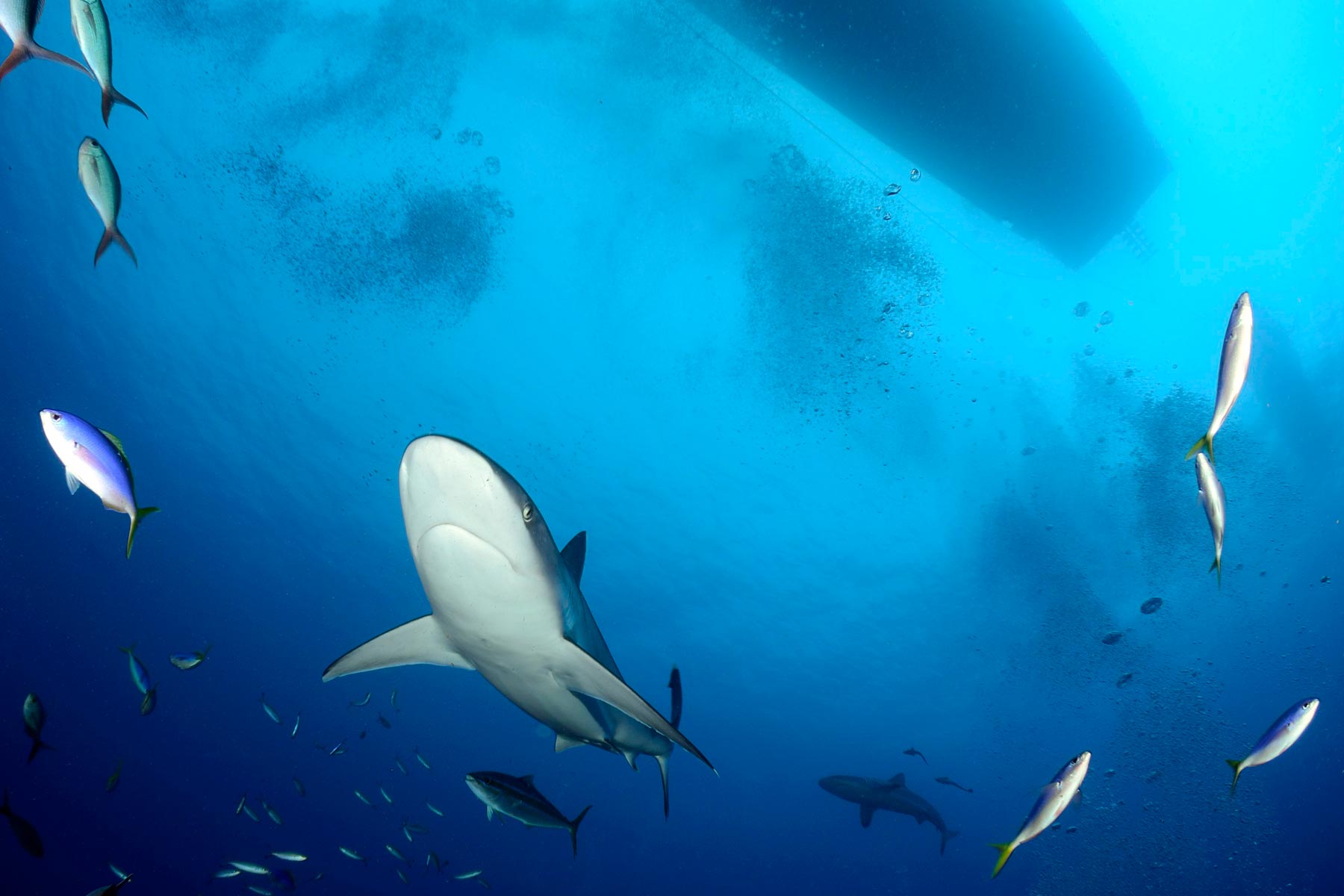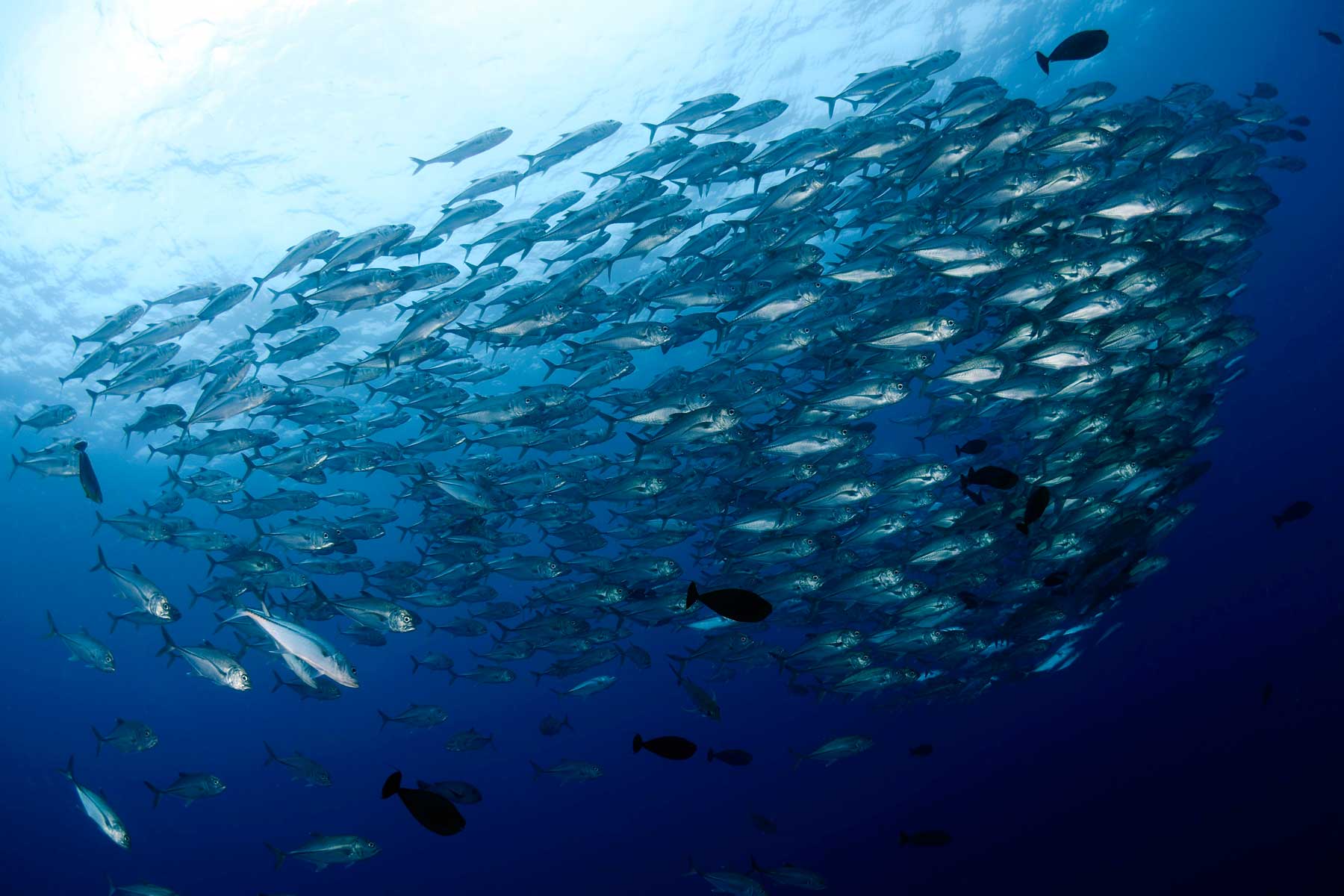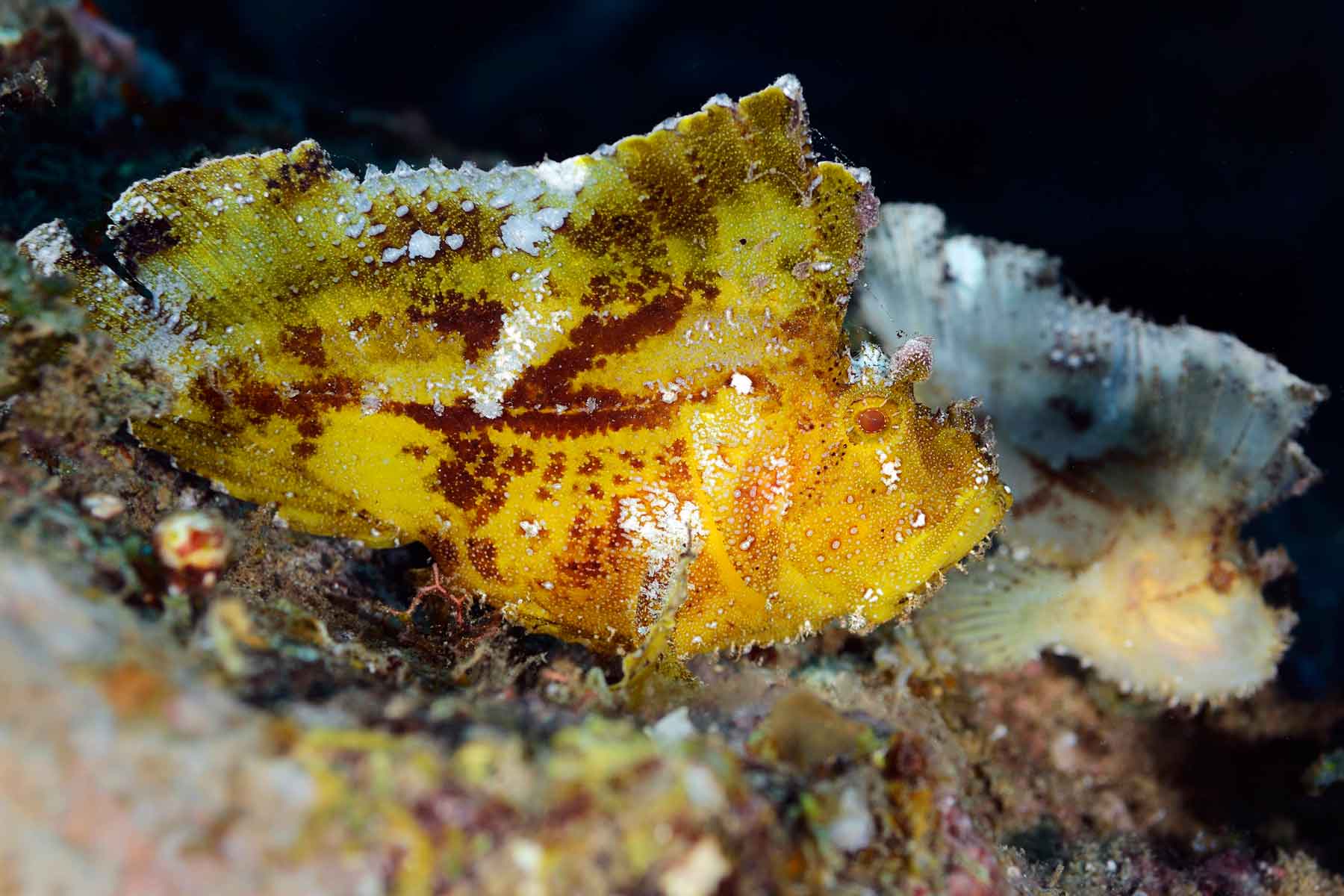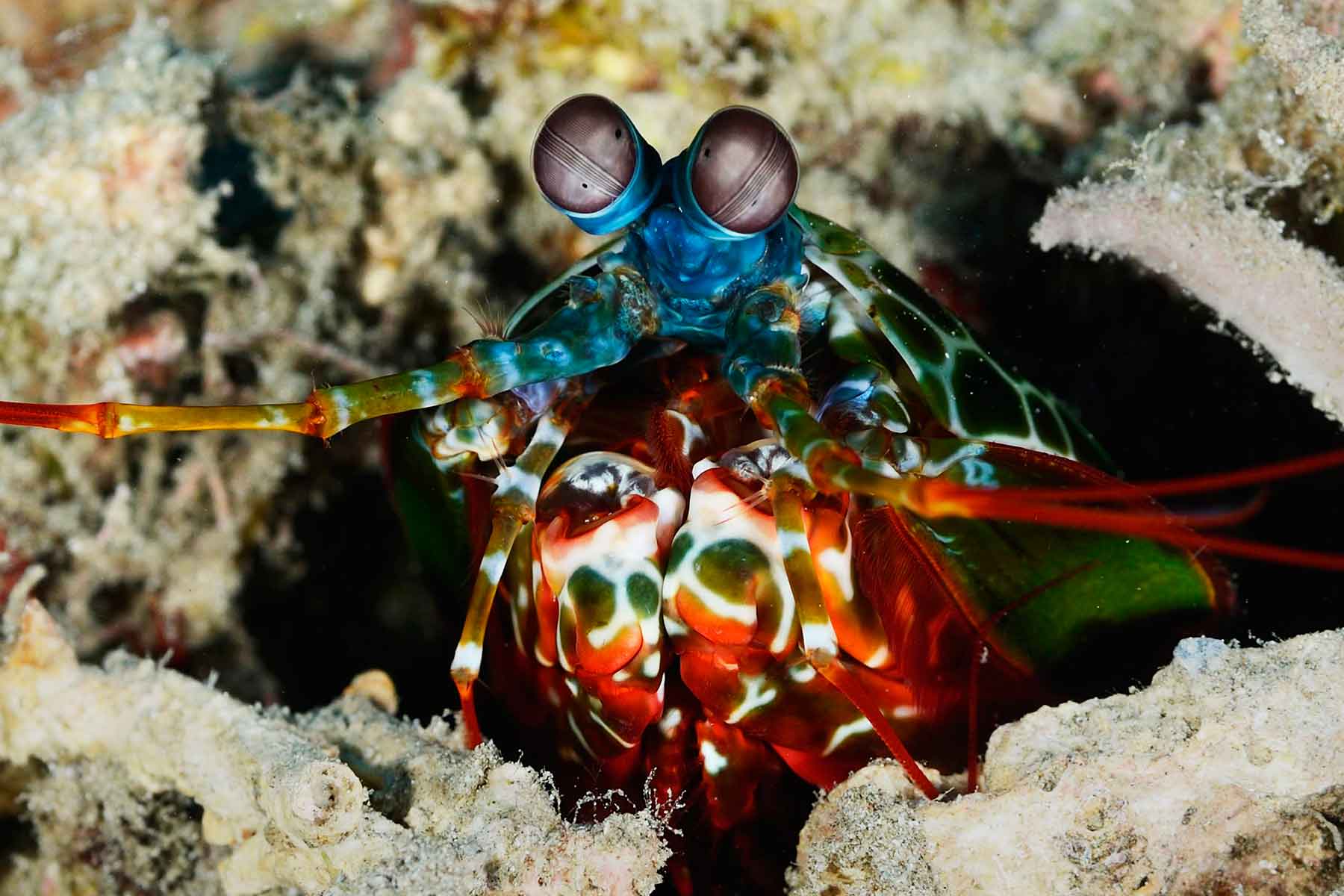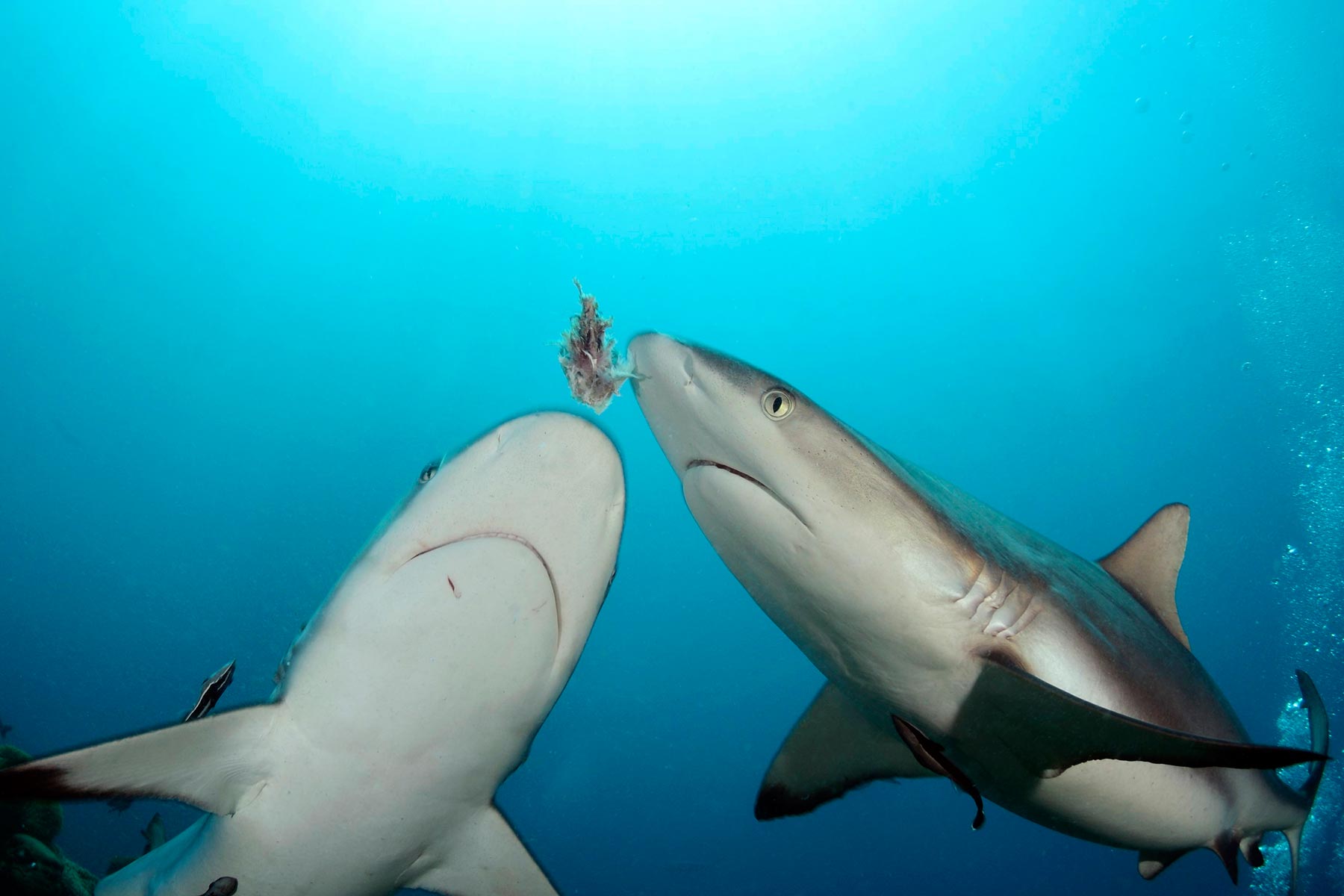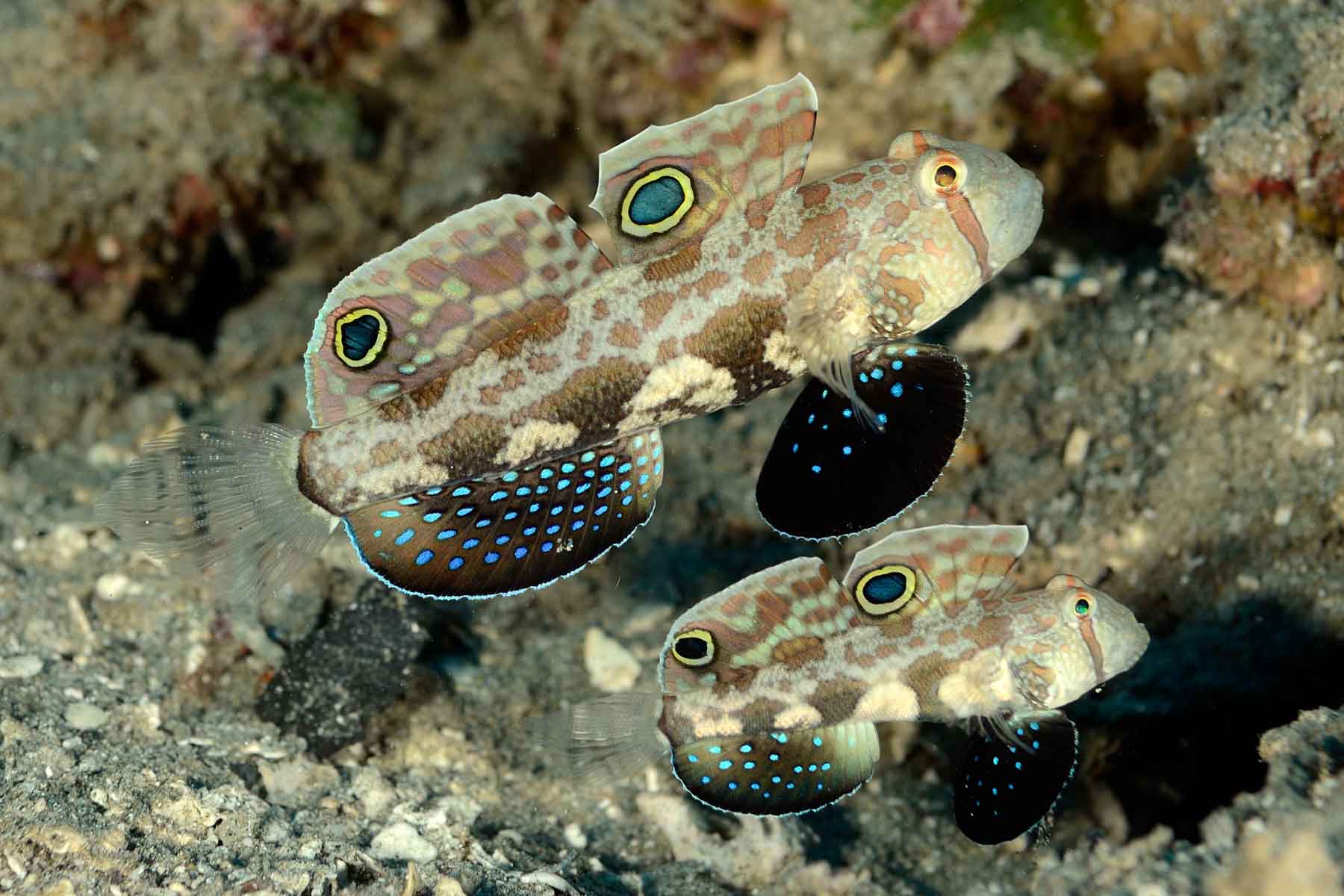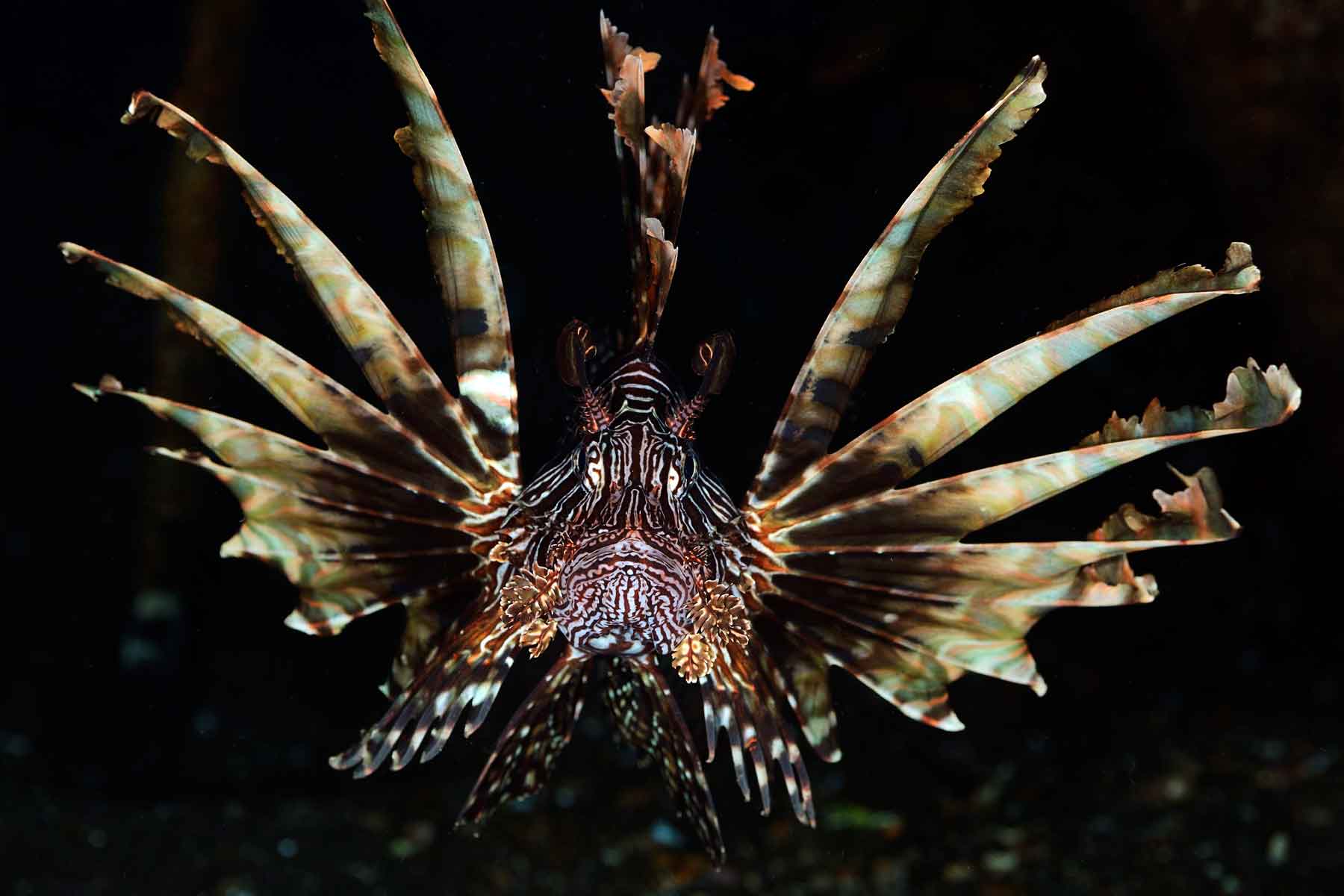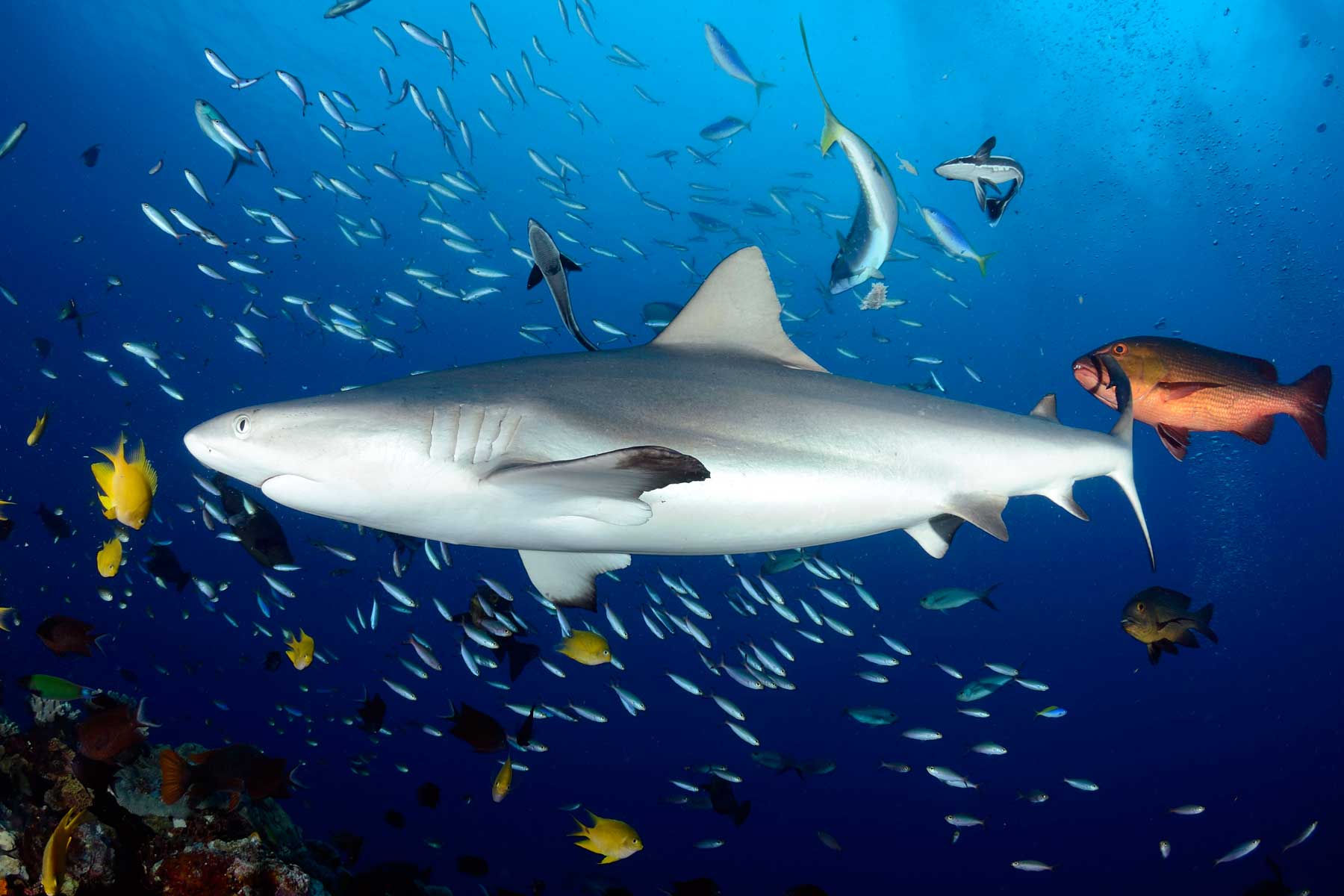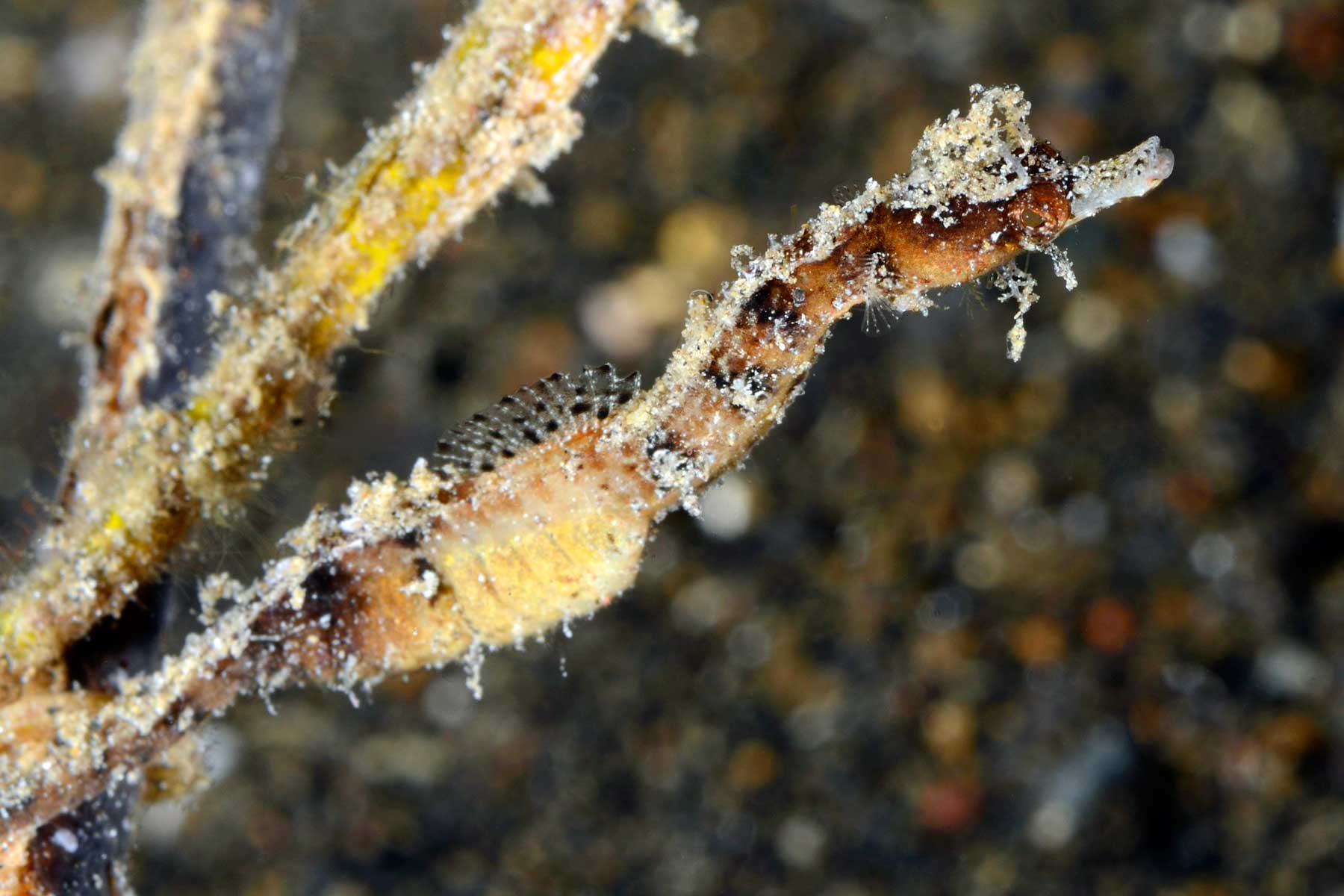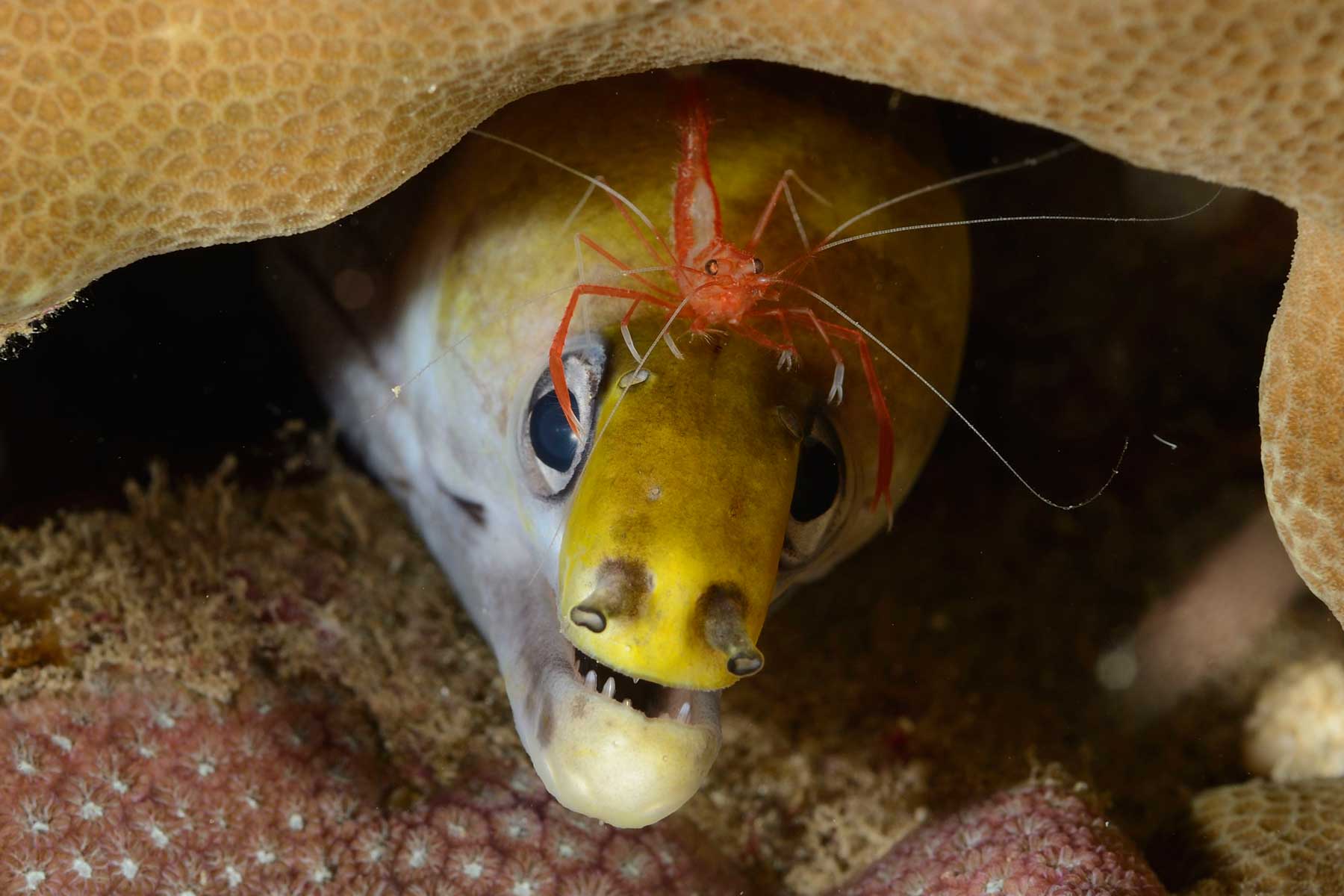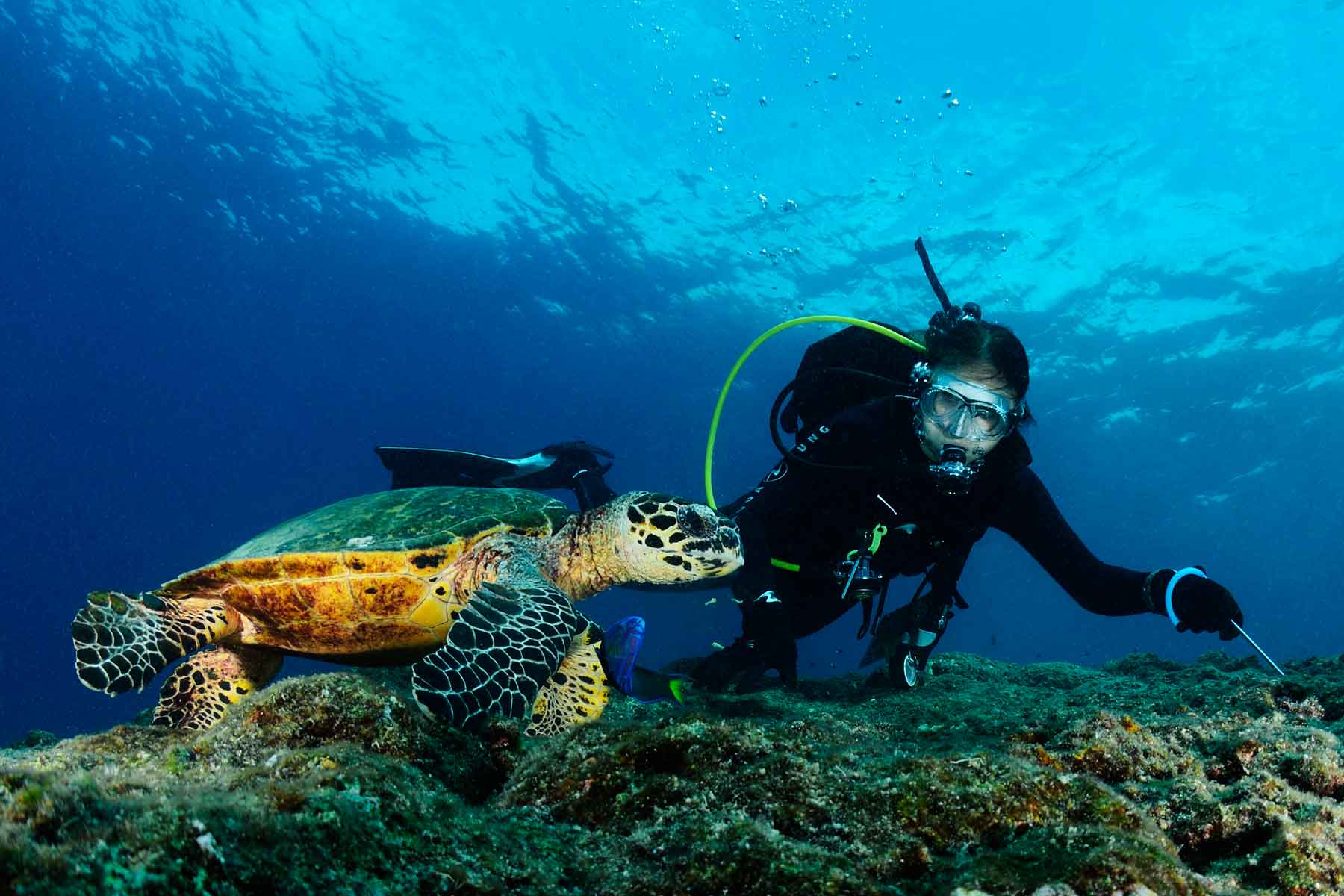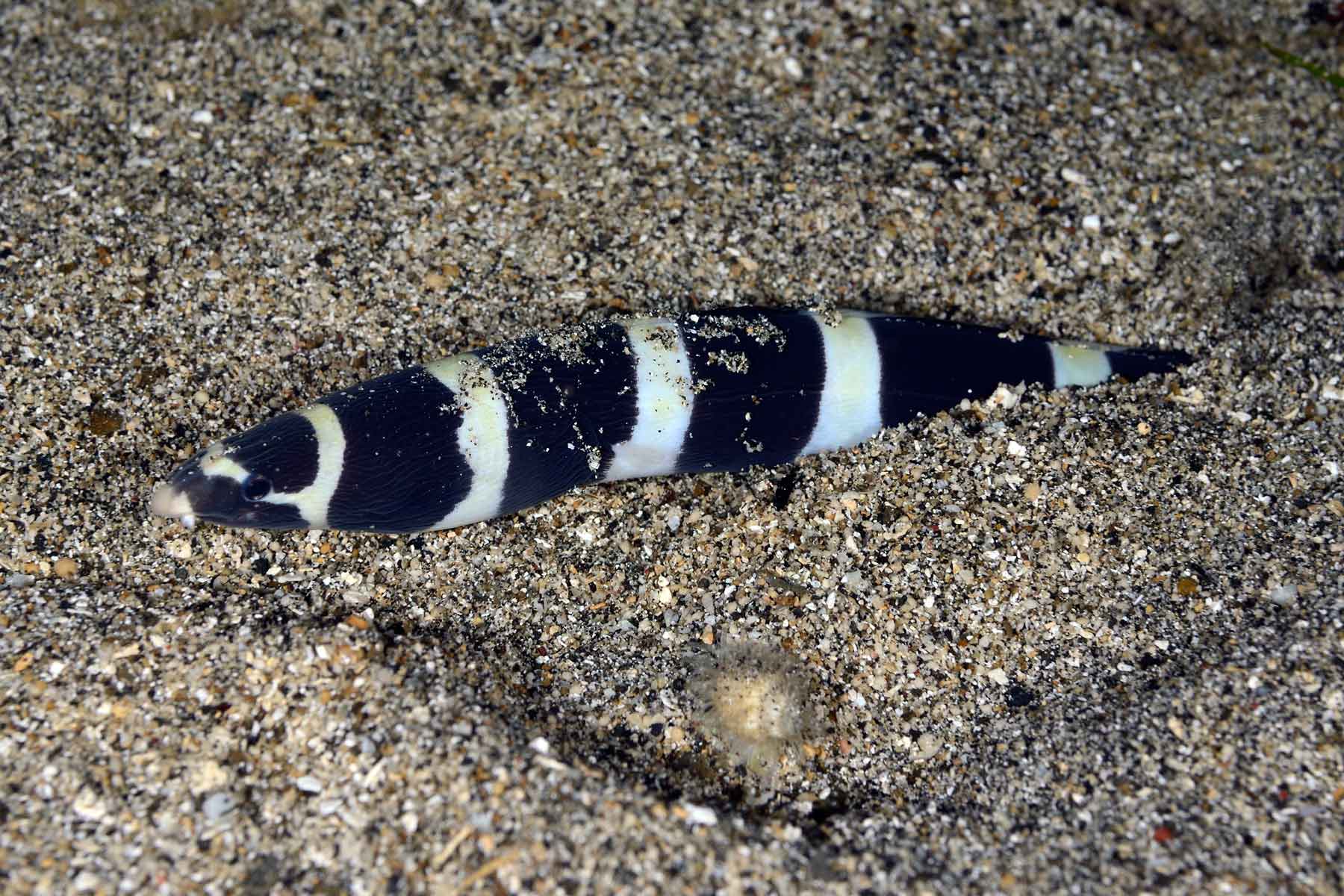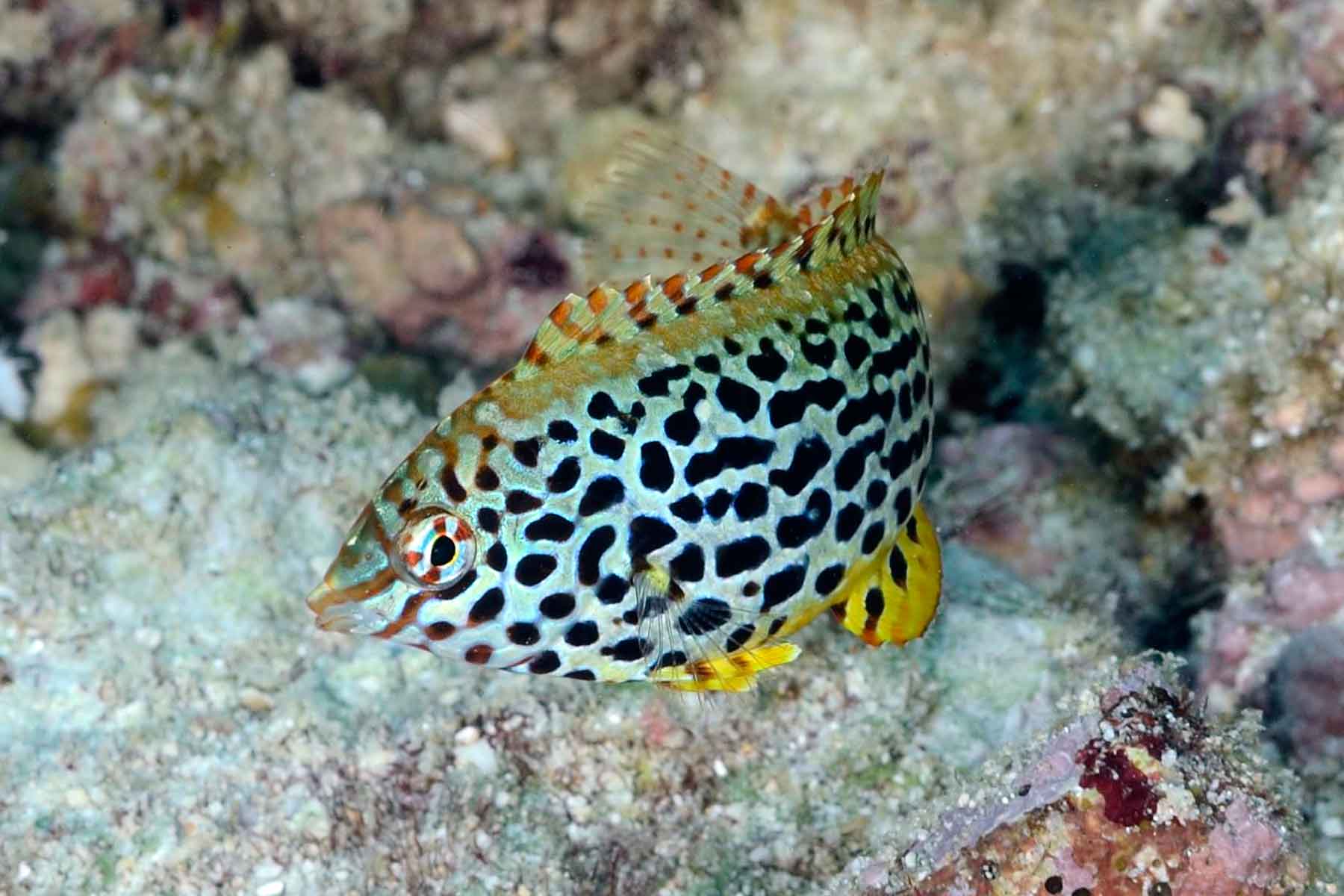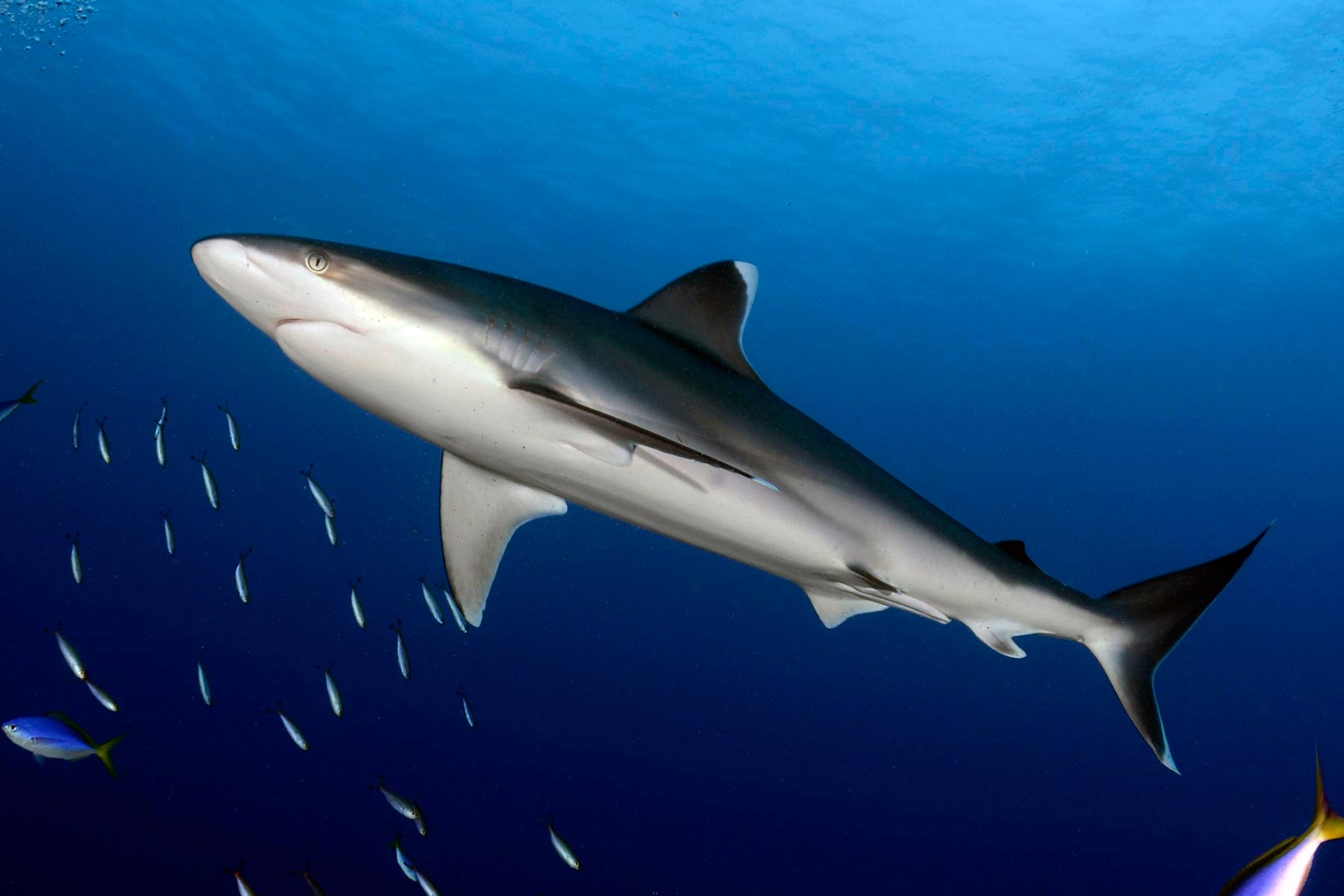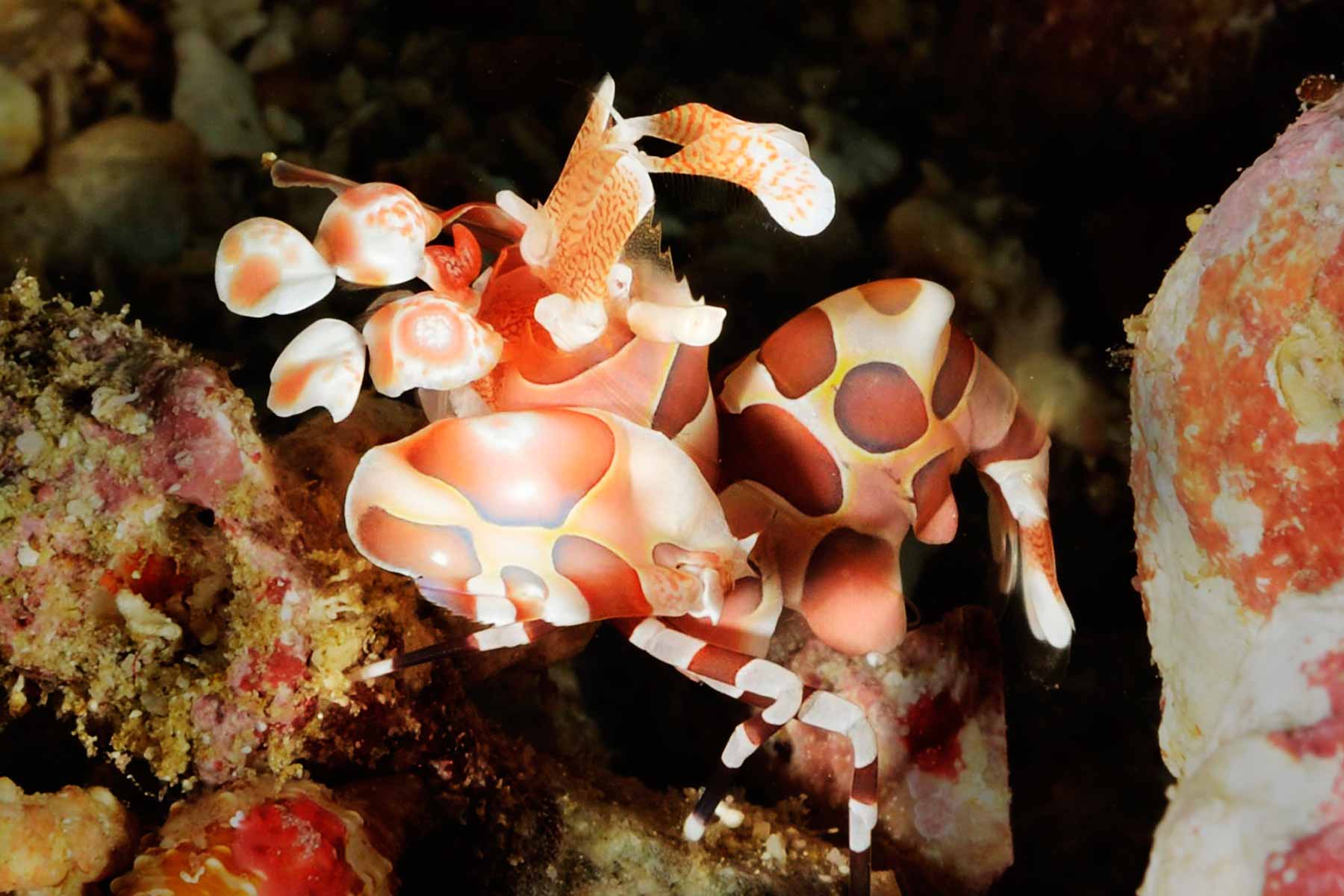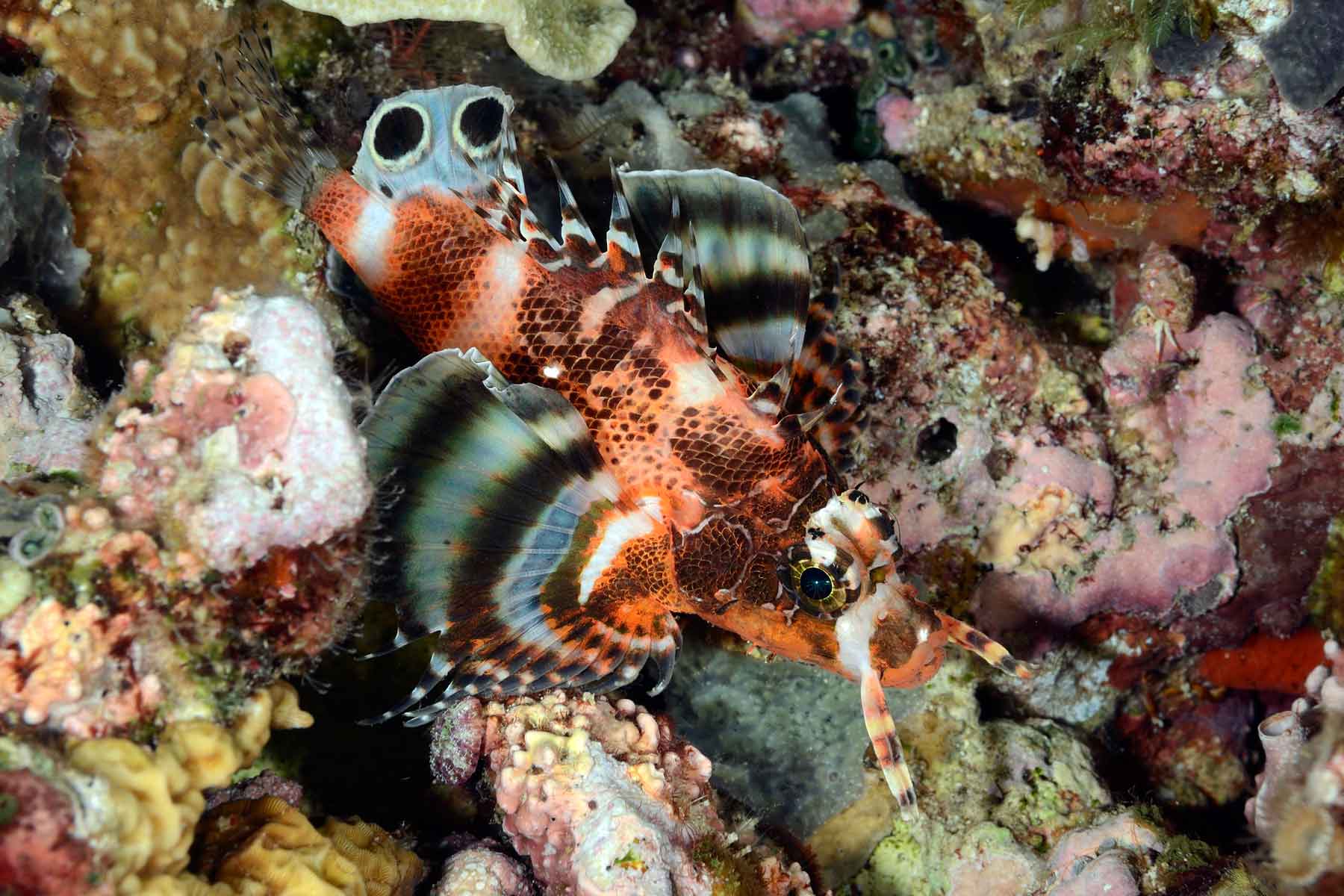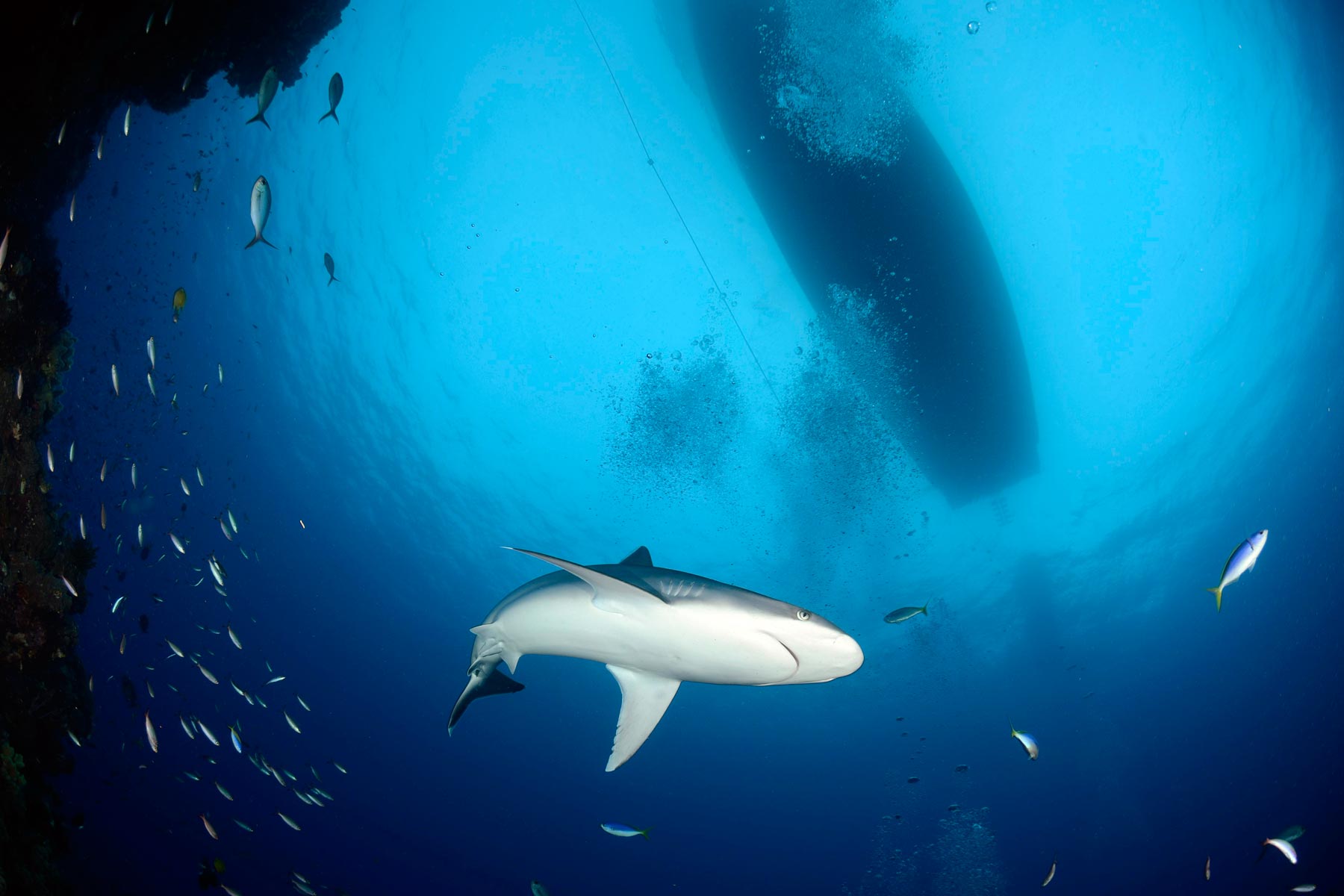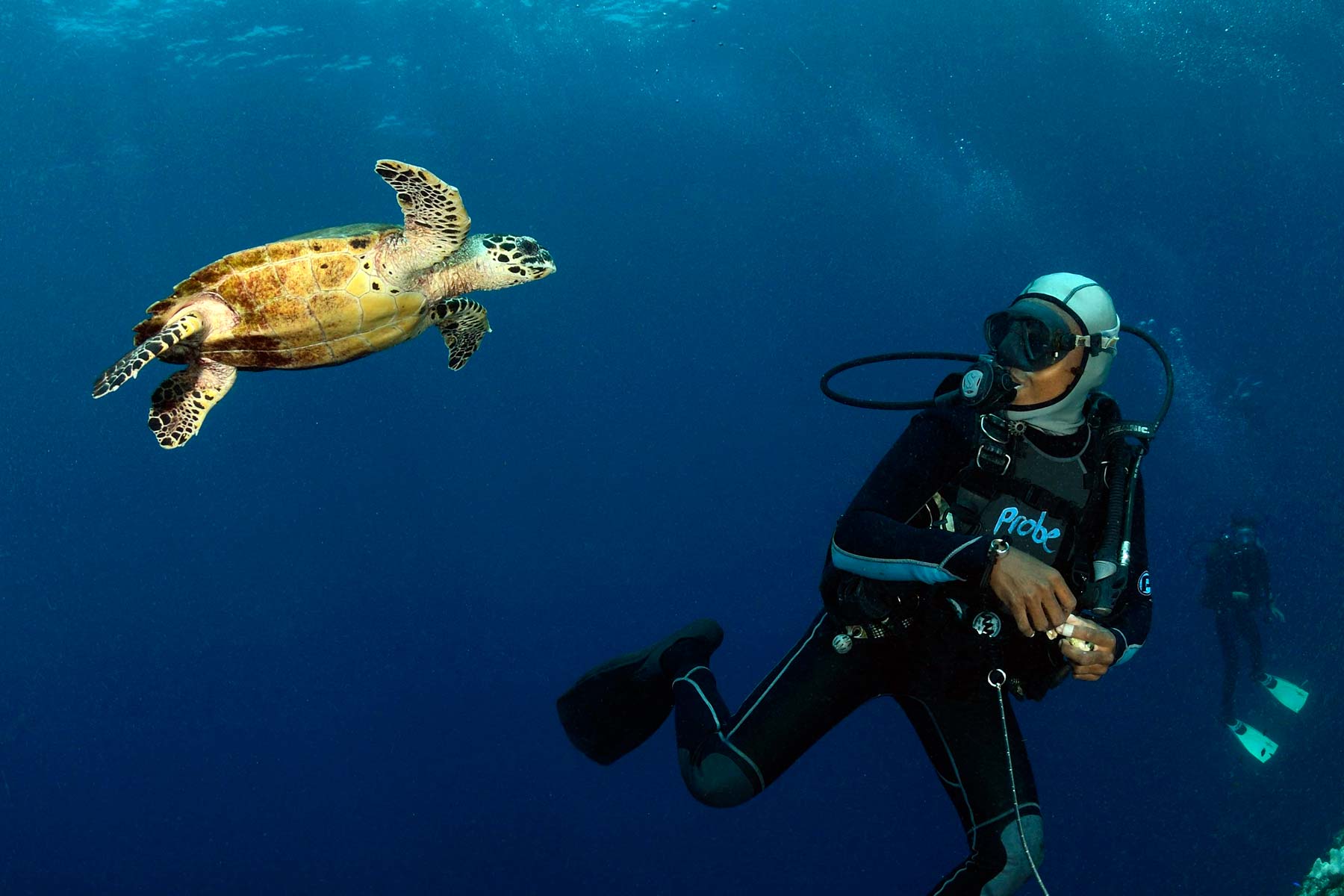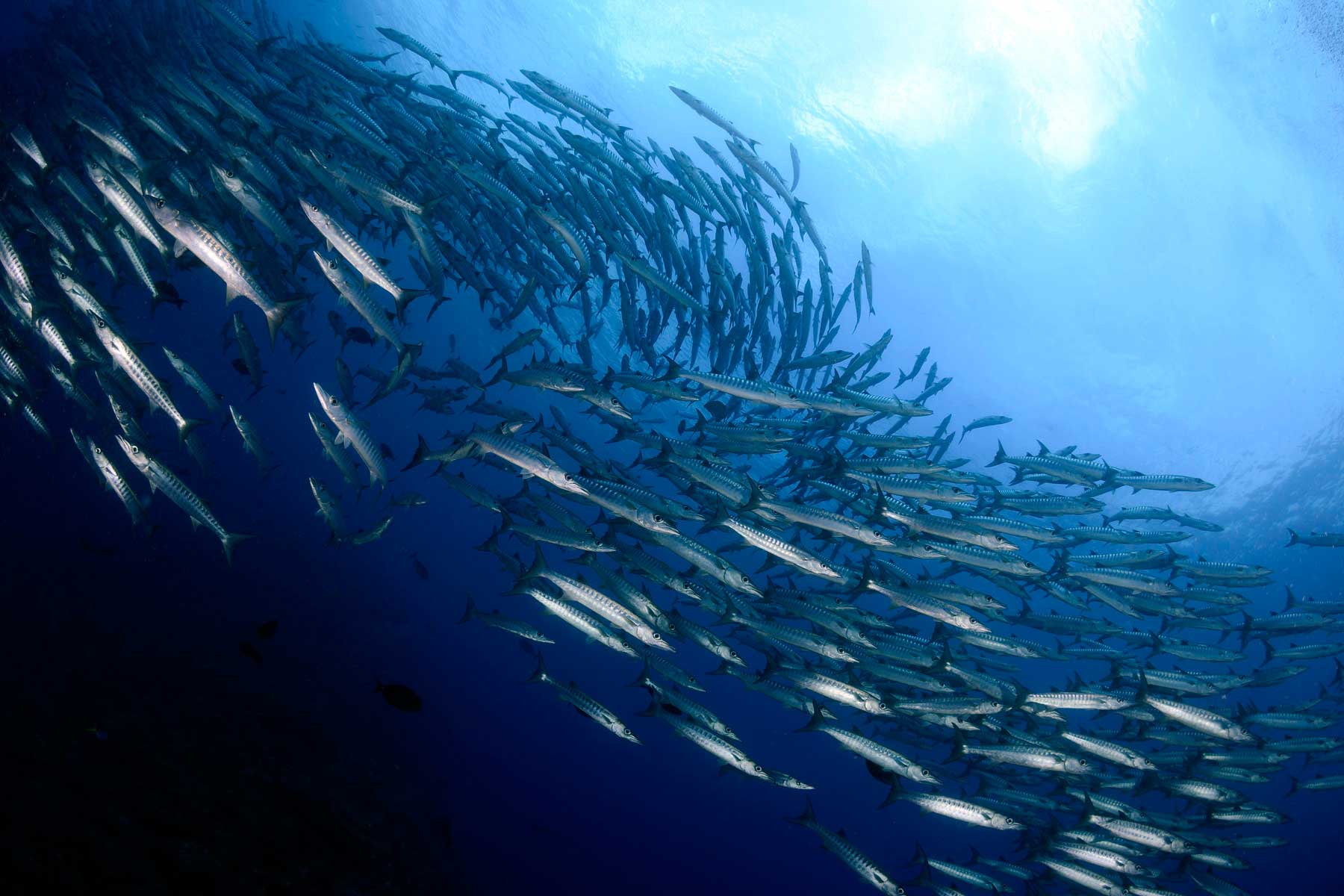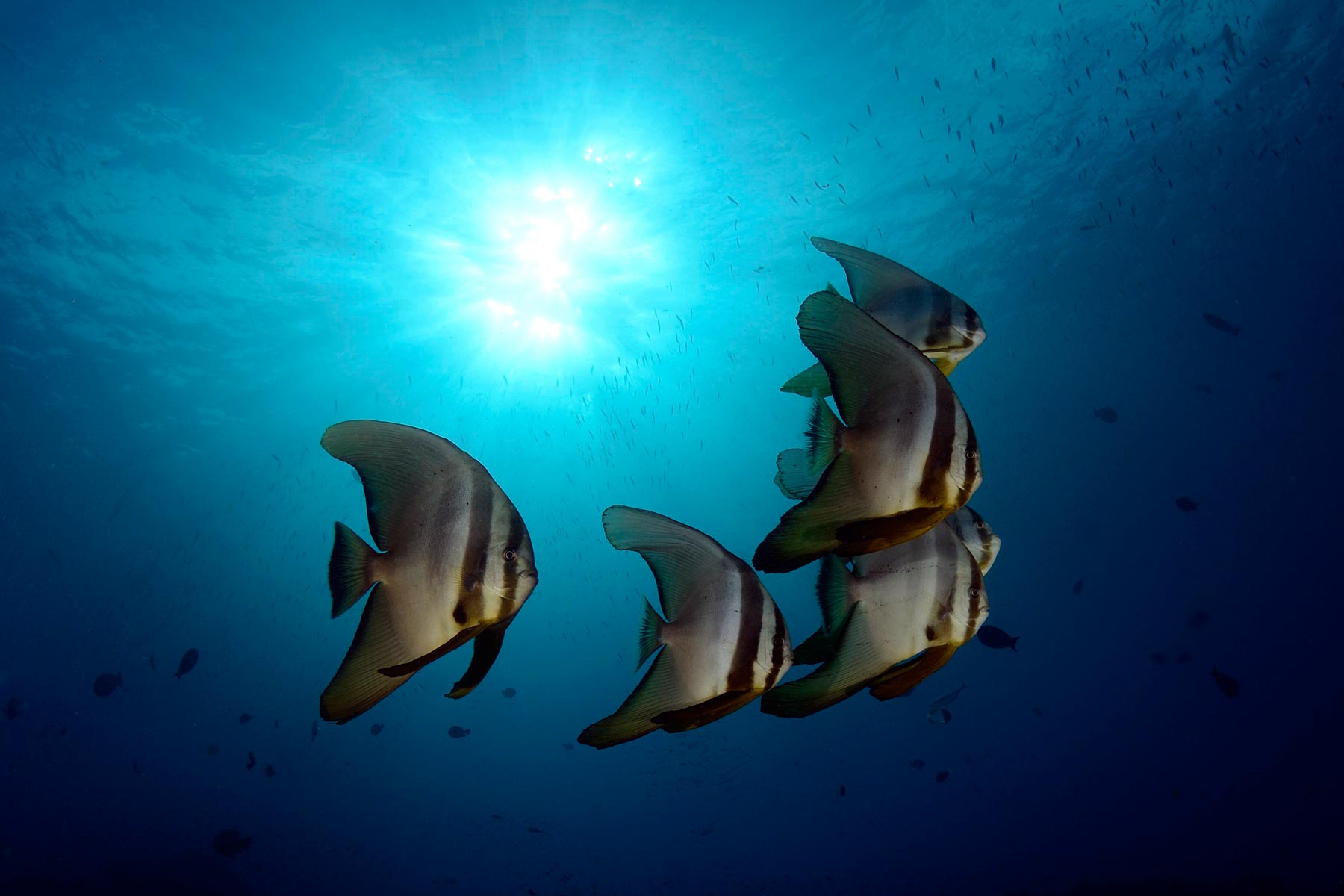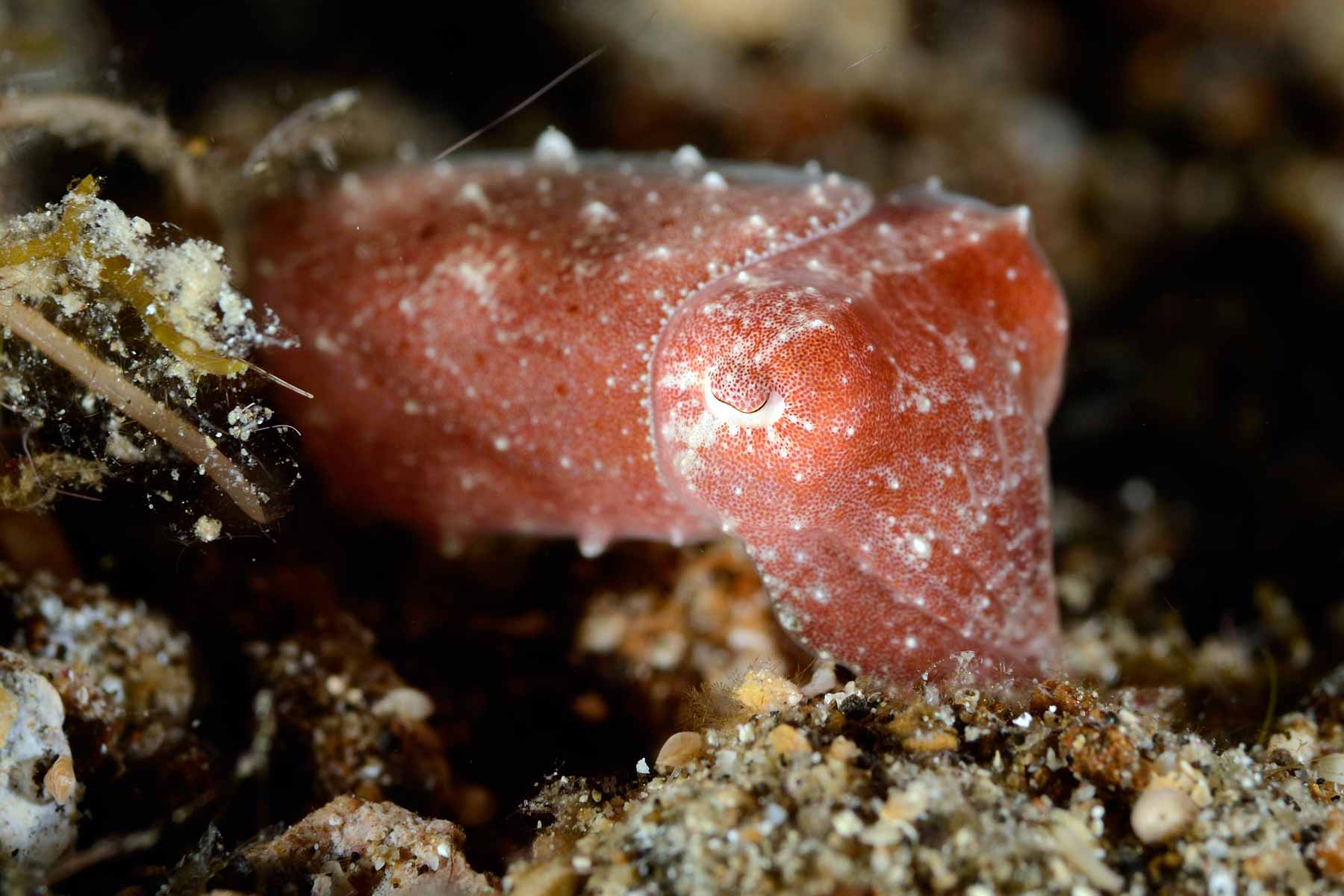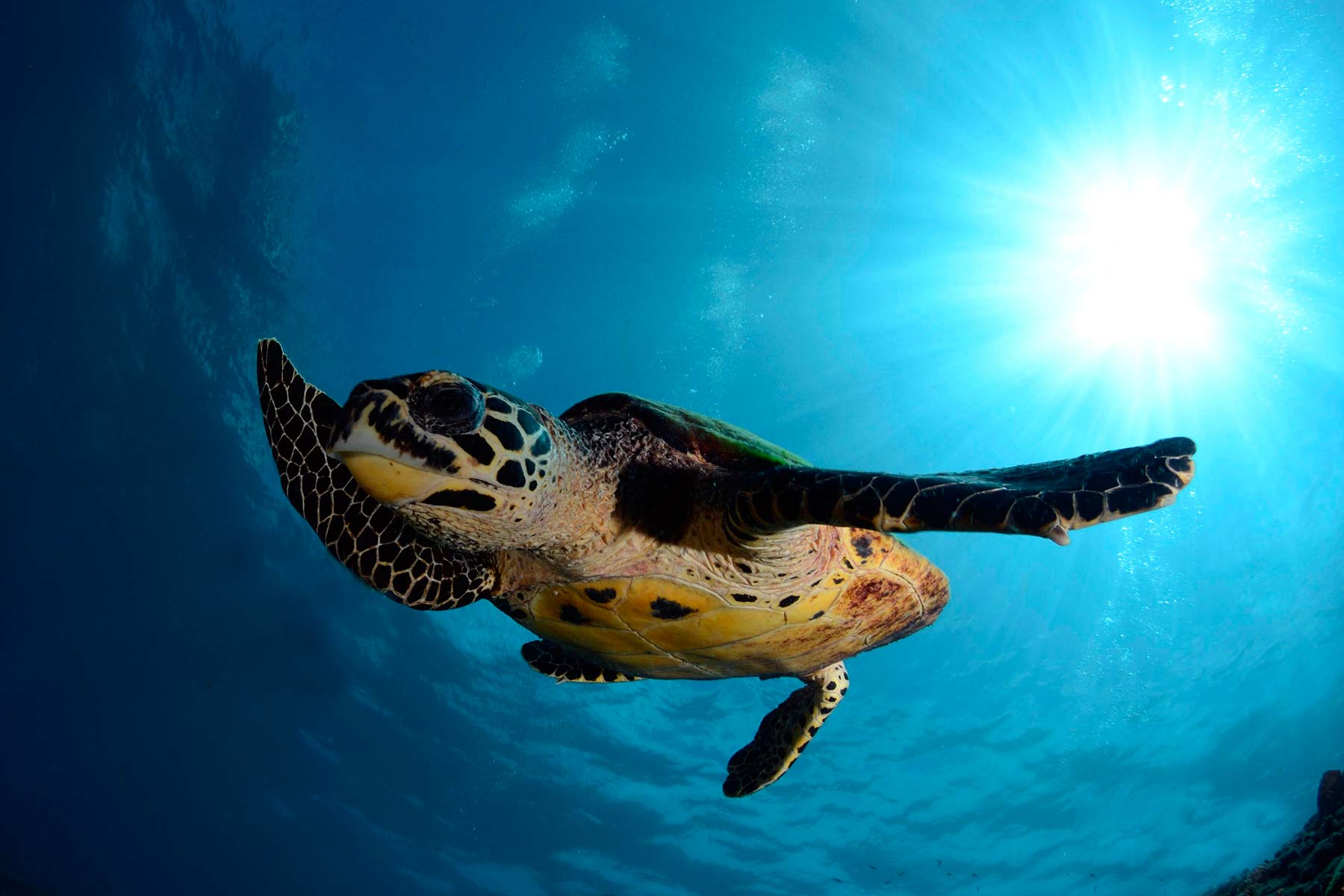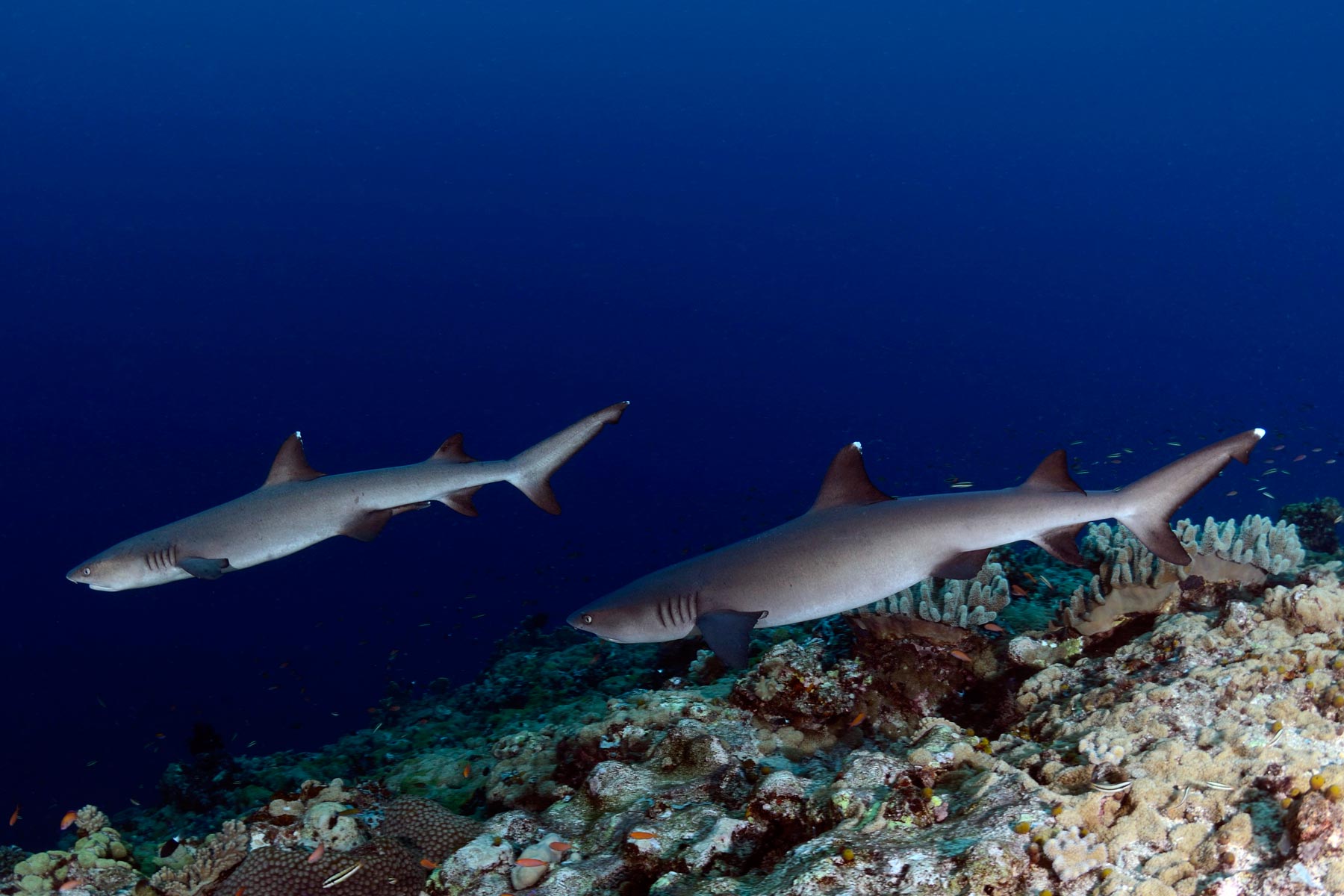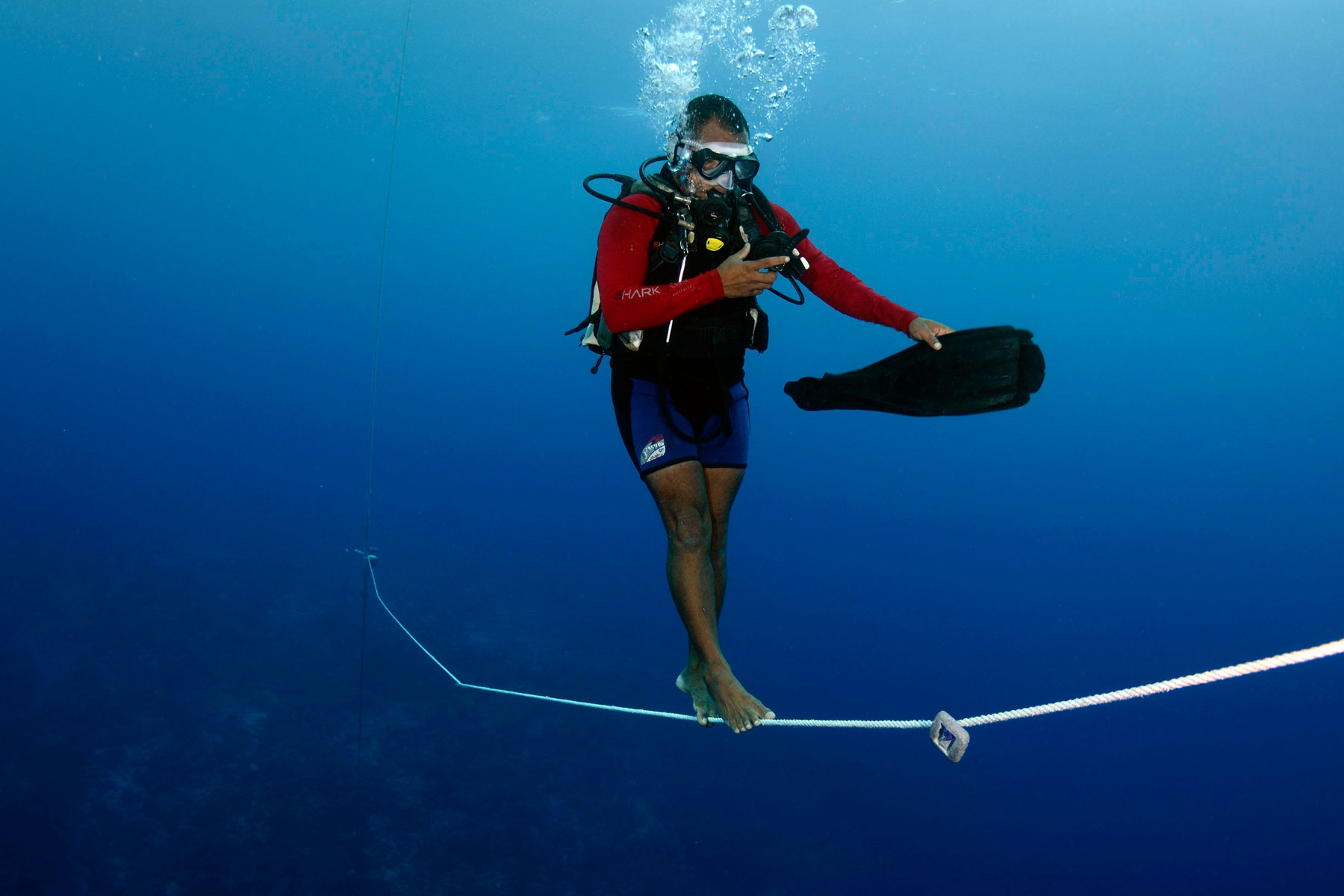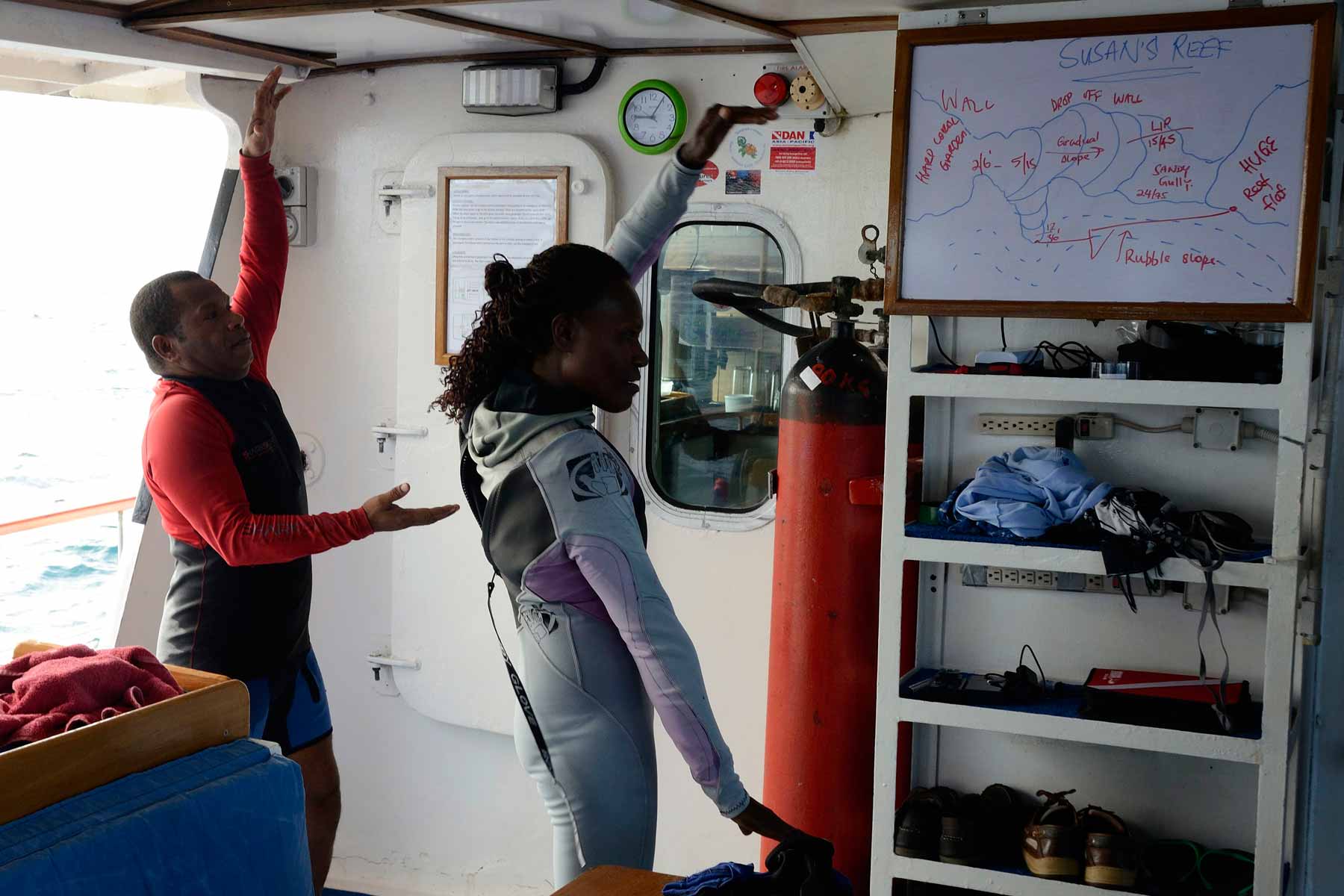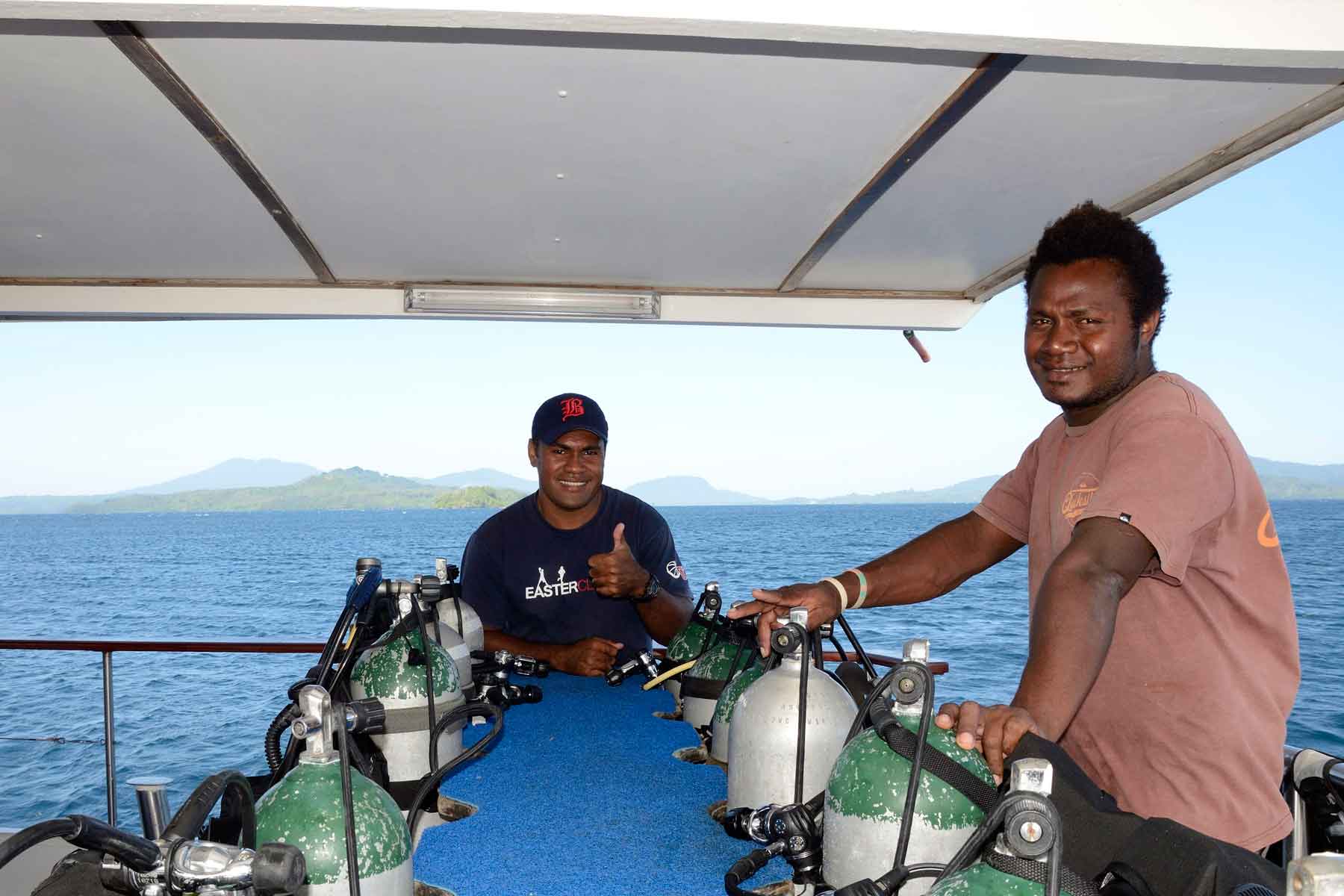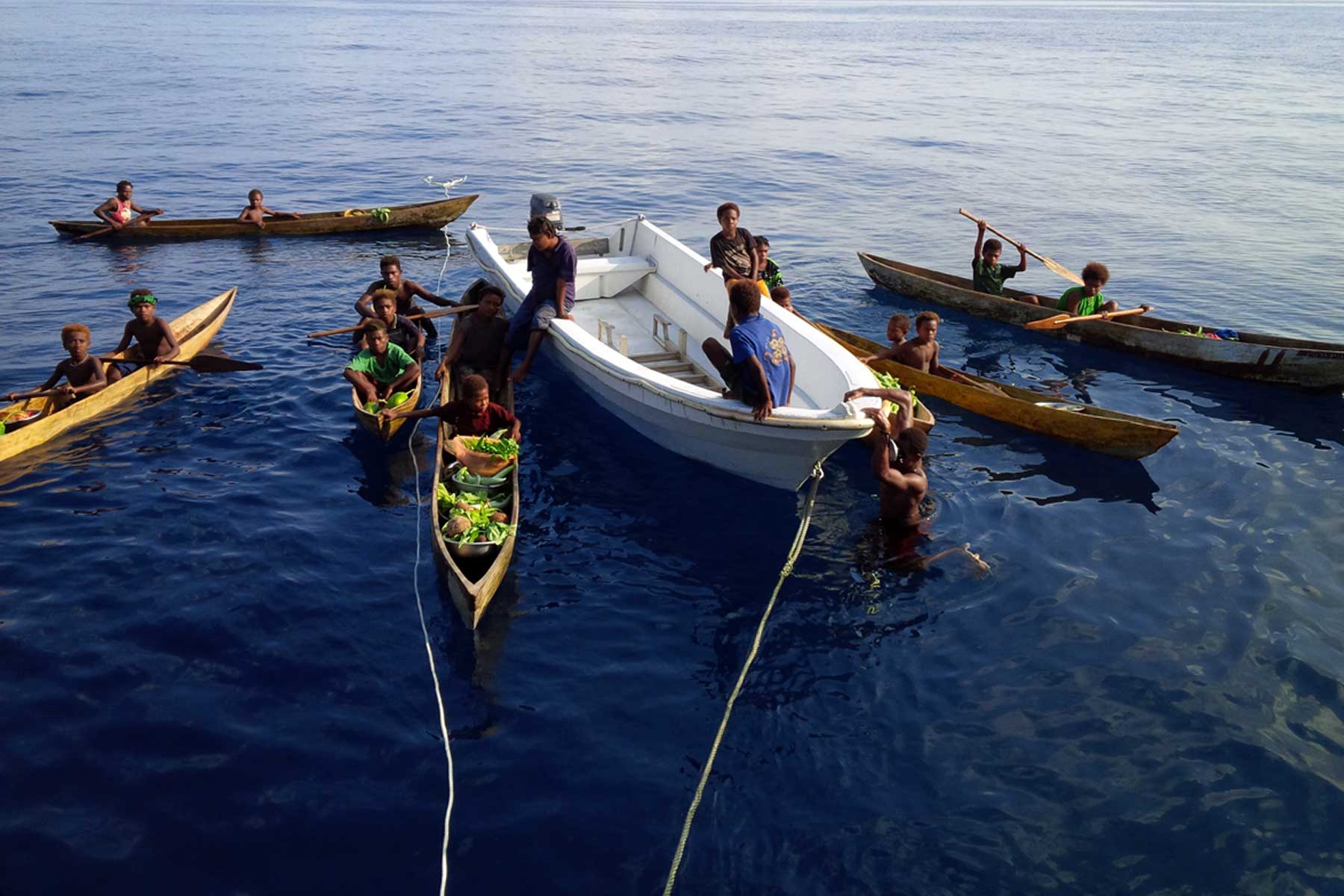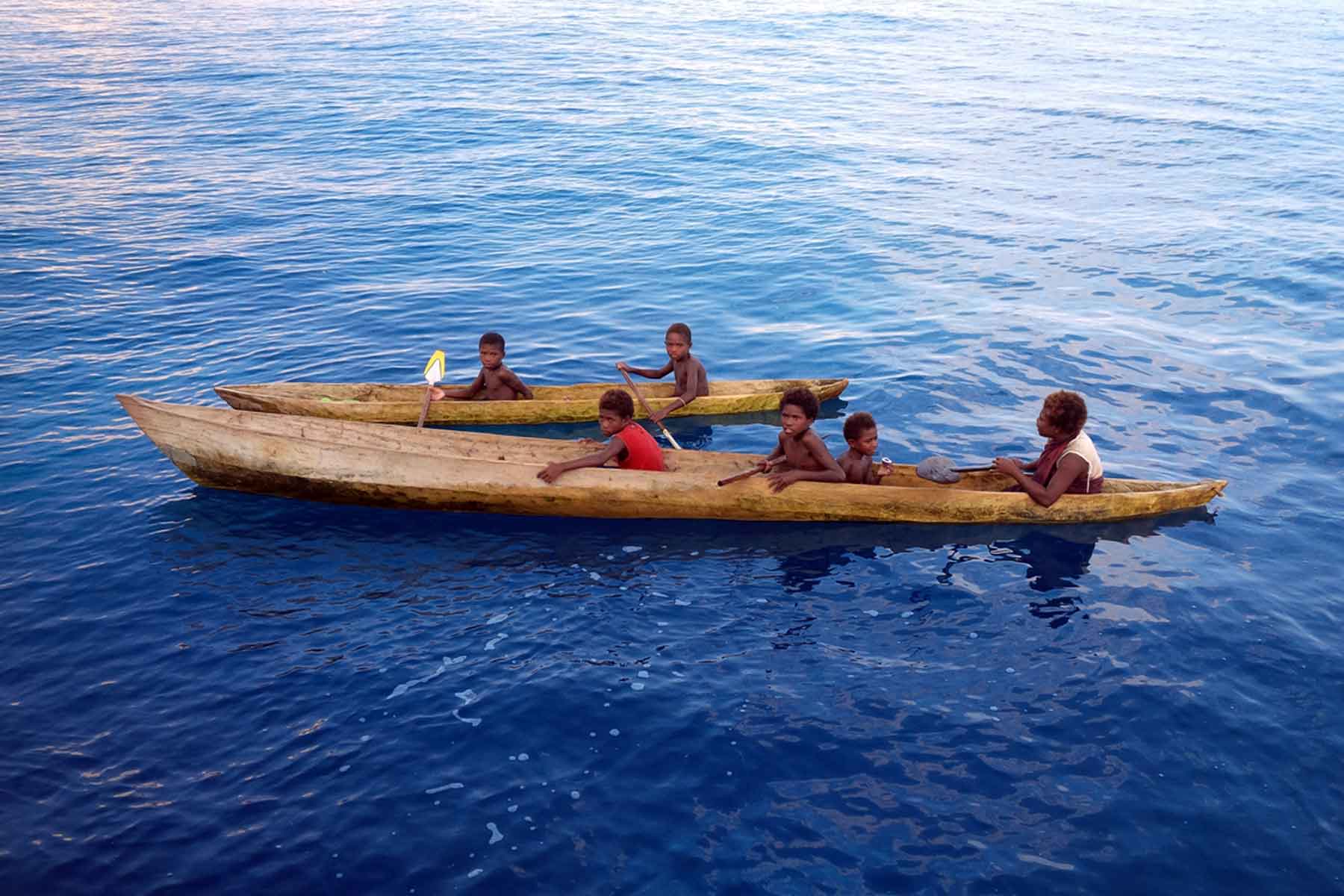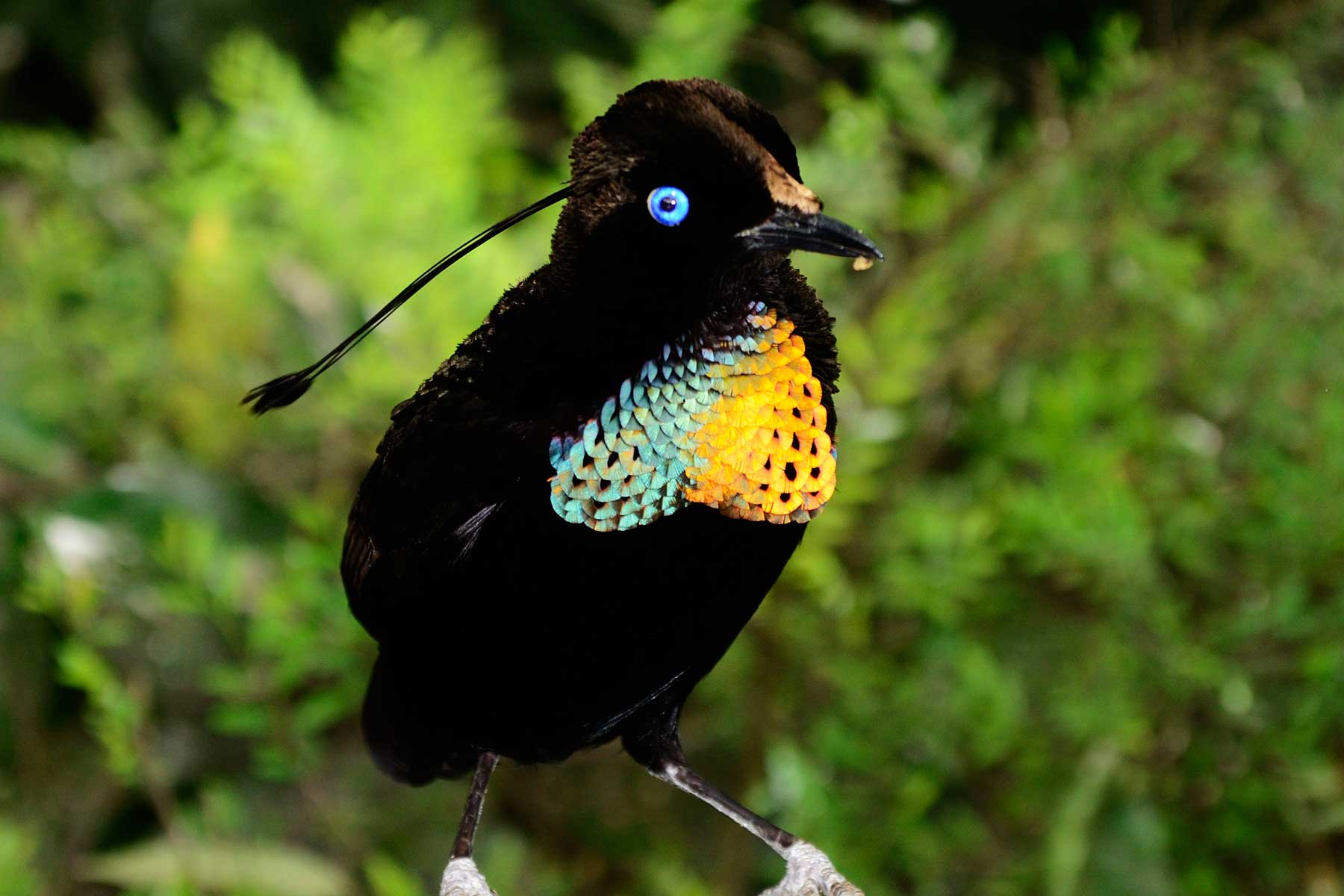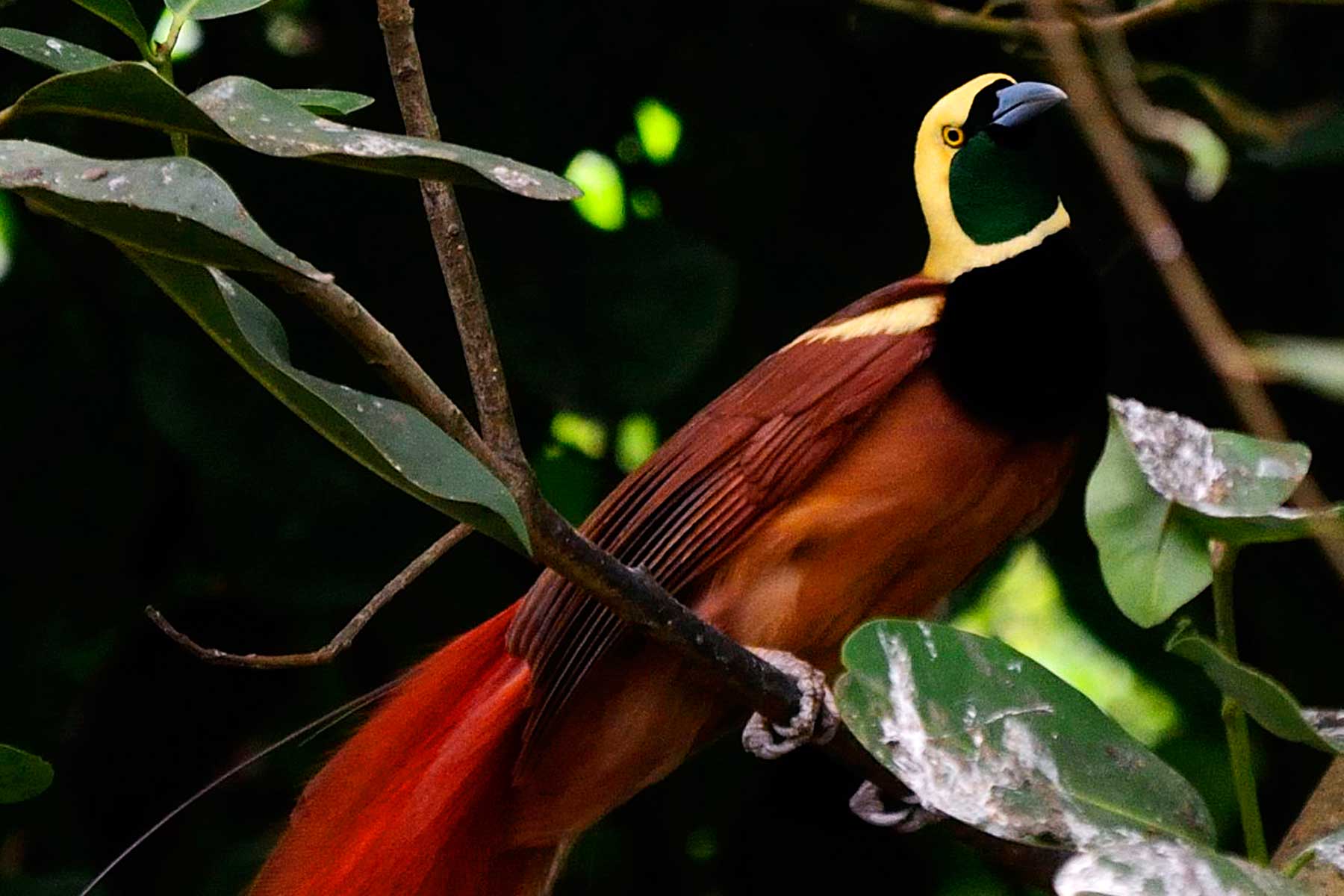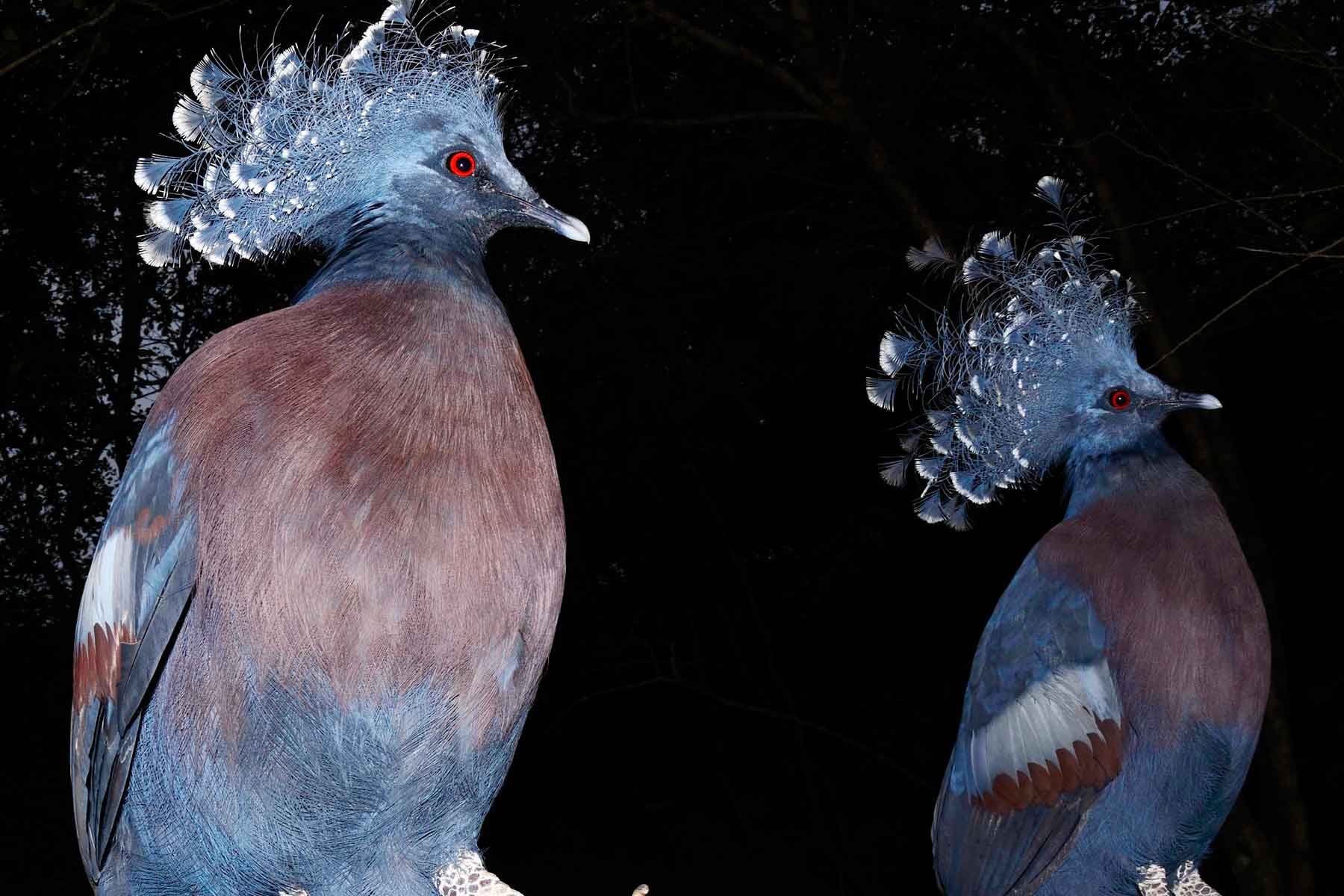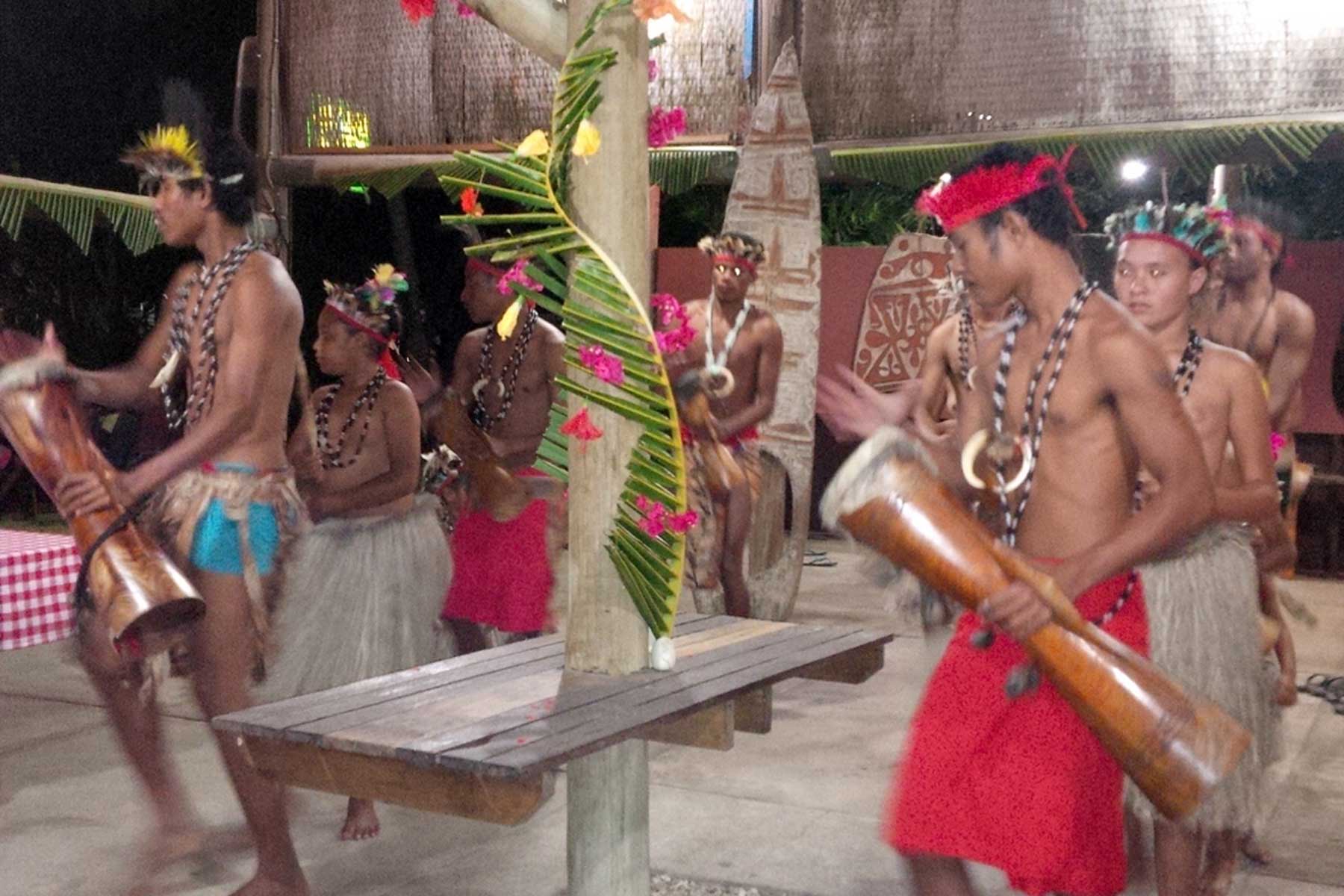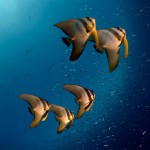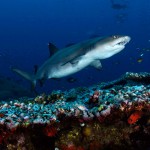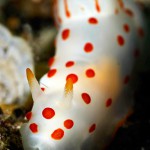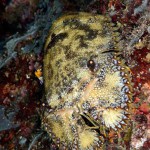PNG Trip Report, October 2014
Papua New Guinea is one of the world’s final frontiers and is home to some of the richest reefs on our planet! In PNG there are only a hand full of dive resorts and the MV FeBrina Liveaboard and so the number of divers visiting each year is tiny compared to neighbouring countries. Those people willing to make the long journey to PNG are rightly rewarded with some of the best diving in the world! PNG currently only has a limited number of flight connections but things are changing and with Air Niugini expanding their routes it maybe that soon PNG will not be so isolated – our tip is to visit now whilst you can still have PNG’s untouched reefs to yourself!
For our PNG group trip we would be joining the MV FeBrina Liveaboard to explore Kimbe Bay, The Witu Islands and Father’s Reef in the Bismarck Sea. Before I joined the liveaboard I also spent some time at Loloata Resort, located only 30 minutes from Port Moresby (PNG’s capital), and at Walindi Plantation Resort which is where most FeBrina trips start and finish.
Loloata Resort & Walindi Plantation Resort
From Loloata Resort I had the opportunity to enjoy some great diving in the Coral Sea at dive sites such as End Bommie and the wrecks of MV PAI II and MV Pacific Gas. At all the dive sites I visited both the coral and fish life were excellent. One of the big draws at Loloata is the opportunity to see Rhinopias and whist I didn’t see any during my short stay some guests informed me they had seen a few the week before at End Bommie. Even without the Rhinopias End Bommie was a great dive with Napoleon Wrasse, schools of Sweetlips, a Hawksbill Turtle and a huge patch of Anemone filled with hundreds of Anemone fish. At Loloata I also had the opportunity to watch a performance by some dancers from a local village and on the day I left the resort I was treated to a city tour of Port Moresby before my afternoon flight. If you plan to visit both the Coral Sea and the Bismarck Sea it’s worth noting the water temps are quite different, 25oC in the Coral Sea vs. 30oC in the Bismarck Sea.
Walindi Resort is reached by a short flight from Port Moresby followed by a scenic drive past endless Palm plantations. Walindi Resort is particularly beautiful nestled on the coast surrounded by huge trees that are covered in an amazing array of ferns. Diving from Walindi takes you out into Kimbe Bay to some of their best seamounts including Joelle’s Reef, Bradford Shoals and Inglis Shoals. These seamounts offer huge schools of Barracuda – an iconic site in PNG, large shoals of Trevally, Hawksbill Turtles, Grey Reef Sharks and a perfusion of smaller fish life. The reefs in Kimbe Bay really do thrive with life. Walindi normally dive their seamounts in the morning and then head to shallower sites such as Restorf Island in the afternoon for some great critter diving. On my final days diving at Walindi we were lucky enough to spot some Sailfish during our surface interval! Evenings at Walindi were very nice indeed, with a very social bar area and a large buffer taking place with an excellent choice of food. For anyone joining the FeBrina Liveaboard we would highly recommend adding on a few nights at Walindi Resort to relax, dive and enjoy some of their popular land tours.
Our Liveaboard adventure begins!
As my stay at Walindi Resort came to an end it was time to start our next adventure – our group trip on MV FeBrina Liveaboard. Joining us on our FeBrina group trip were clients from the UK, US, Germany and Austria. On FeBrina we would be offered up to 5 dives per day and for our first days diving we headed out into Kimbe Bay to dive sites such as Joelle’s Reef, Inglis Shoals and Kapepa Island. At Joelle’s and Inglis it was the Barracuda, Turtles and Sharks that stole the show, whilst at Kapepa it was the macro critters such as Nudibranchs, Shrimps, juvenile Cuttlefish and Pygmy Pipehorse that had everyone excited!
The Witu Islands – critters & big fish galore!
Our first days diving finished we next made the 6 hour crossing to the Witu Islands. These islands are volcanic ocean peaks and our first dive on day 2 would be a macro dive in the submerged crater. This was one of the best macro dives of the trip with Blue Ribbon Eel, Peacock Mantis Shrimp, Golden Mantis Shrimp, Nudibranchs and the wreck of a tractor completely covered in Glassfish. Following our dive at The Crater we headed next for Krackafat (a.k.a. Lama Shoals), one of the most renowned dives in the Witu Islands. Krackafat proved to be one of the best dives of the whole trip, a seamount with endless visibility and every fish you could wish for! Schooling Barracuda, Trevally and Batfish were joined by, hunting Mackerel, Rainbow Runner, Dogfish Tuna and a cruising Eagle Ray – if you could imagine a perfect dive in your head it would probably look something like Krackafat!
With the currents starting to pick up at Krackafat we decided to move to a calmer site for our next dive and so we headed to Wiry Bay for a macro dive. Many macro dives are associated with poor visibility but not at Wiry Bay! The contrast of the black volcanic sand and the perfect blue visibility was really a sight to behold and the schools of Sand Divers hovering in mid ocean searching out prey just on the seabed added to the atmosphere. At Wiry Bay we found two beautiful Leaf Scorpionfish, one white and the other yellow. The yellow Leaf Scorpionfish was a frequent yawner! Other highlights at Wiry Bay were Signal Gobies, Peacock Mantis Shrimps and a very curious Lionfish.
For our third day of diving we headed to Goru Arches. This site consist of two large arches and the first divers in the water found the first arch to be occupied by a huge school of Bumphead Parrotfish. The arches themselves were adorned with soft corals and some resident Batfish hung around to pose for photos. For our next dives we concentrated on the Witu’s marvellous macro sites, including Dickie’s Place so named after the late Dickie Doyle, a much loved character who lived in the Witu Islands most of his life. These macro dives were good in the day and got even better at night with White-V Octopus, Blacksaddle Snake Eel, Squat Shrimps, Whip Gobies, Peacock Mantis, Saddled Snake Eel, Arrowhead Crab, Soft Coral Porcelain Crab, Squat Lobster, Orangutan Crab, an Electric Clam, Nudibranchs, a huge Snail and a Moray with a Shrimp on its head! During our third day way were also visited by lots of local people coming out to see us on their canoes and some of our group took the opportunity to visit the local village.
For our fourth day we headed back to Krackafat by popular demand and found out what the site was like when the current was really running! Next up was another of the Witu’s highlight seamounts – Barney’s Reef. We had two great dives at Barney’s Reef with amazing visibility, schooling Trevally and Red Snapper, hunting Tuna, Giant Trevally, Mackerel and Grey Reef Sharks, a large Octopus keen to display its tentacles, Boxer Crabs, Candy Crabs and the grand prize – Harlequin Shrimps!
Father’s Reef & the Lolobau Islands
With our final dives completed at the Witu Islands it was time to head to Father’s Reefs and the Lolobau Islands, around 10 hours sail from the Witu’s. For our first dives we headed to Alice’s Mound and Midway Reef both of which were like an aquarium, with excellent visibility, Grey Reef Sharks, Giant Trevally, Big Eye Trevally, Snapper, Batfish, Tuna, Mackerel, hunting Bluefin Trevally, Moray Eels and a giant Stonefish. Following the excitement of these dives we next headed to Shaggy Ridge home to Father’s Reefs Silvertip Sharks! At Shaggy Ridge we were treated to extremely close up encounters with both Silvertips and Grey Reef Sharks, as well as a curious Potato Cod! Silvertip Sharks are one of the most beautiful sharks I’ve ever encountered and there are very few places in the world where you can encounter one so easily. For our night dive we remained at Shaggy Ridge where we found Slipper Lobsters and a rare Twinspot Lionfish.
The next day we moved to another of Father’s Reefs famous dive sites – Miels Reef. Miels is a known nursery for juvenile Silvertip Sharks which are often encountered under ledges. On our dive we didn’t encounter the juveniles but we did encounter the Mother! We also spotted a Potato Cod along with many other pelagic fish we were finding to be so abundant on all of the Bismarck Sea’s seamounts. Our next dive was at Elaine’s Reef where we found a huge school of Barracuda. Schooling Barracuda were present on most of the seamounts on our trip but the one we encountered on Elaine’s Reef had to be the biggest school of all! At Elaine’s we also encountered a large school of Bumphead Parrotfish swimming over the reef top along with many hunting Bluefin Trevally. Our next dives were at Norman’s Knob and Leslie’s Knob and Leslie’s proved to be the winner of these dives with perfect afternoon lighting combining with a beautiful school of juvenile Batfish who loved to pose for the cameras. The batfish were joined by a friendly Hawksbill Turtle and schools of Trevally and Barracuda to make Leslie’s Knob one of the best dives of the trip!
Day 7 would be our final full day of diving at Father’s Reef and our dive sites included Jayne’s Gully home to two of PNG’s friendliest Turtles and Belinda’s Reef where we encountered many Whitetip Reef Sharks, a very large Grey Reef Shark, Trevally, Barracuda and a Napoleon Wrasse. On day 8 we had two dives at Killibob’s Knob and whilst the visibility could have been better the amount of fish life present was exceptional, with at least four types of Trevally – Bluefin Trevally, Blue Trevally, Giant Trevally and Big Eye Trevally, Whitetip Reef Sharks, a large Grey Reef Shark on the safely stop, and schools of Fusiliers and Pyramid Butterflyfish that were present on many of our dives adding exceptional colour to the reefs. Our dives at Killibob’s Knob were our last at Father’s Reef but the day was still young and following a 5 hour sail back to Kimbe Bay we were ready to continue our diving. A sunset/night dive at Restorf Island provided many treats, including a field of Garden Eels, a juvenile Snowflake Moray, a White-V Octopus and a dancing Flatworm.
Our final day on FeBrina had finally arrived but we would still have the chance to do two dives so that gave us something to smile about! Our dives would be at Kirsty Jane’s Reef and Susan’s Reef where we were in search of macro critters. At Kirsty Jane’s Reef we found four Bargibanti Pygmy Seahorse on a single sea fan, as well as a Spider Crab and many types of soft coral shrimps. Whilst at Susan’s Reef it was a Denise’s Pygmy Seahorse that stole the show along with Ornate Ghost Pipefish!
It should be mentioned that whilst this trip report concentrates on many of the pelagic fish and critters we encountered in PNG one of the most astounding things about our dives was the variety and pristine nature of the corals both soft and hard including the biggest sea fans and barrel sponges I’ve ever encountered. In addition, the variety and abundance of small and medium sized reef fish on our PNG dives was the best I’ve ever seen. This abundance of coral and reef fish species combined with the excellent pelagic and critter life adds up to make PNG one of the world’s best dive destinations today. And with only one liveaboard operating you can be sure that you will not encounter any other divers on your trip!
FeBrina – one of the smoothest dive operations in the business!
FeBrina is one of the smoothest dive operation in the business. Diving takes place off a duckboard at the back of the boat which saves valuable time. As soon as the last diver is out of the water you will often be straight on your way to the next dive site. This allows FeBrina to easily offer up to 5 dives per day whilst still giving you plenty of bottom time plus time to relax in between your dives to enjoy the wonderful food they provide – there is plenty of that too! As with many dive trips it is the dive guides that have the biggest effect and without a doubt FeBrina has two of the best in the business – Josie and Digger. And of course FeBrina’s captain, Alan Raabe, has to get a special mention for it is he who makes sure you dive the best sites at the best time and of course entertains with his unique humour!

